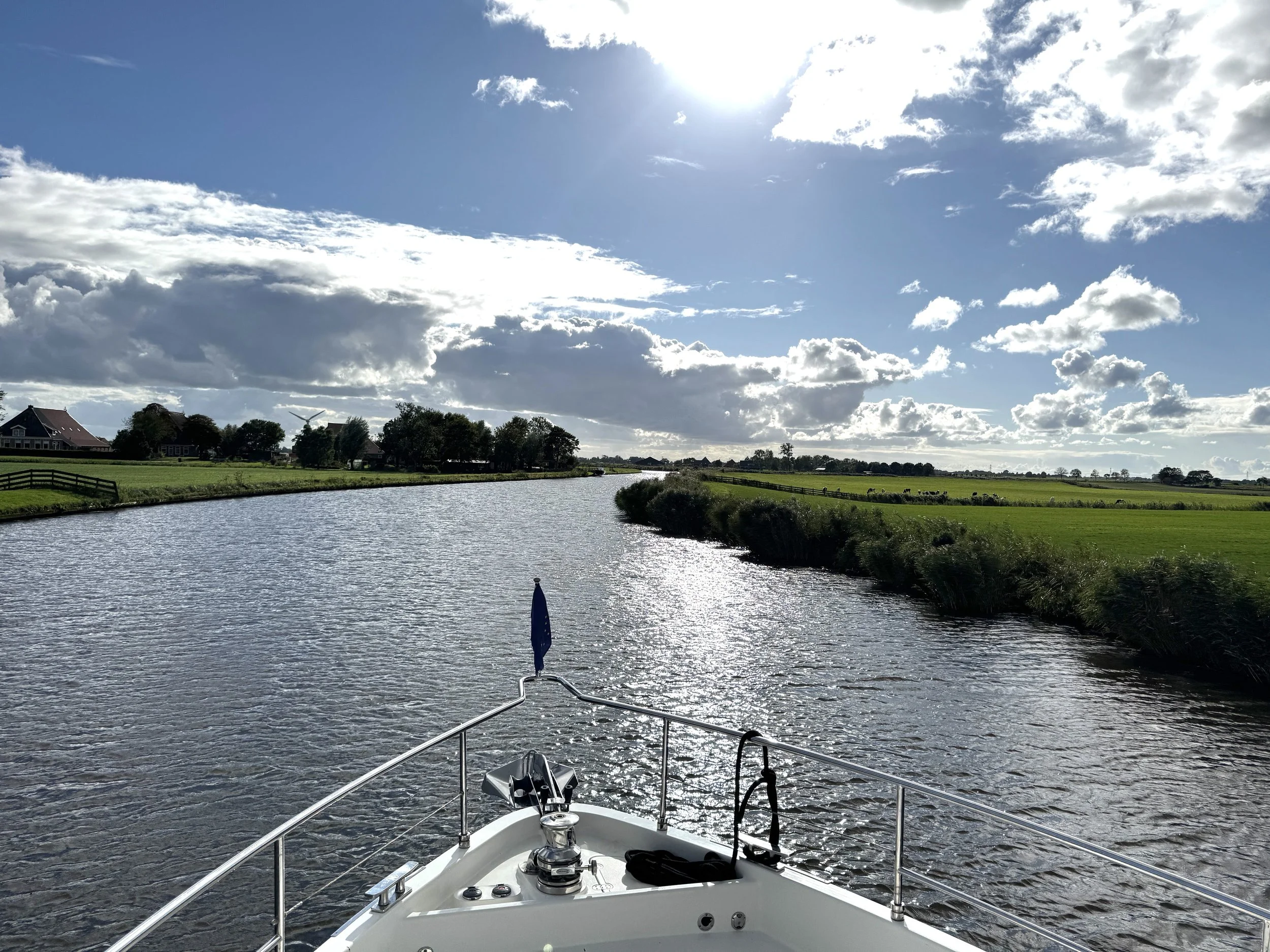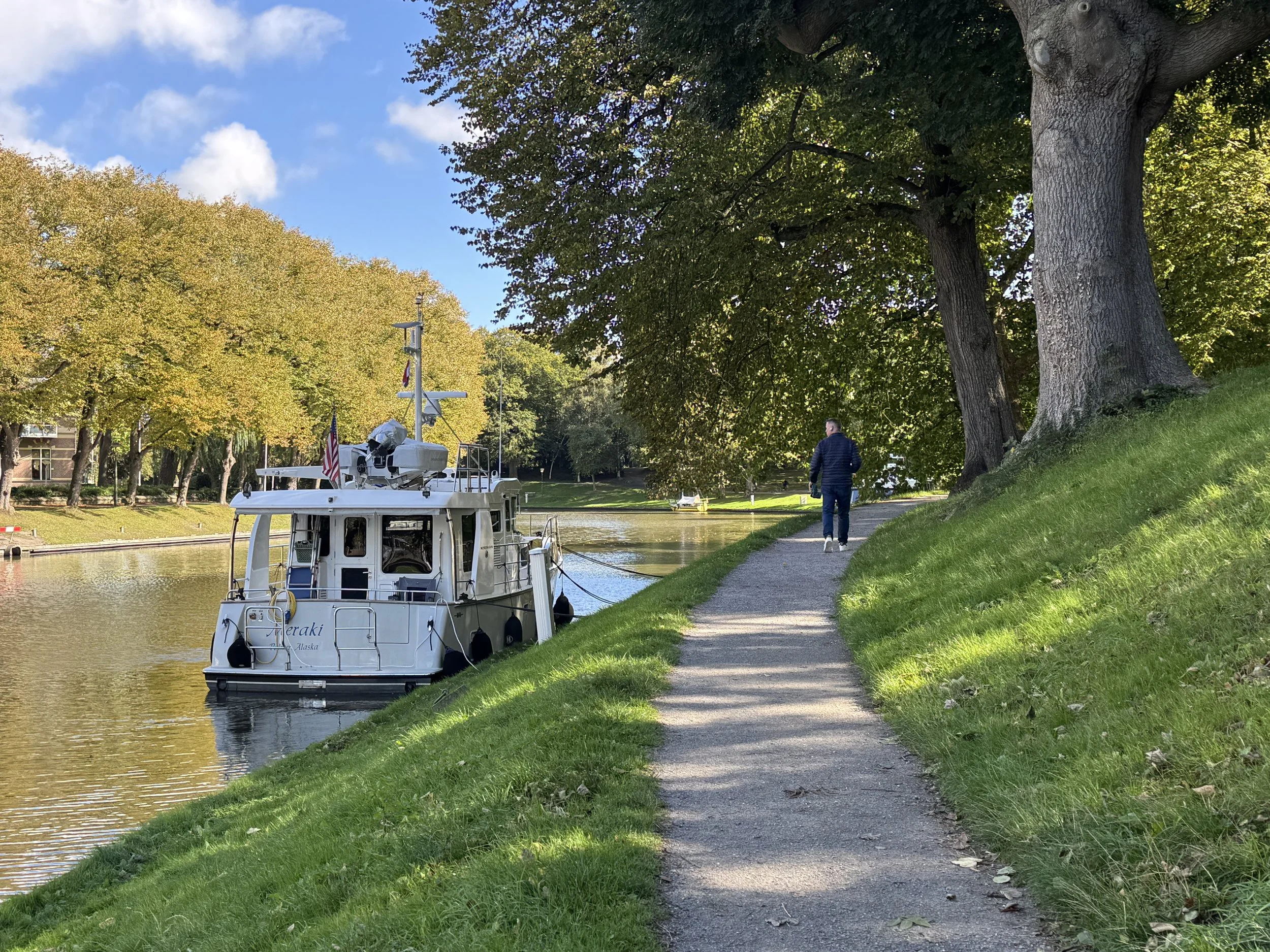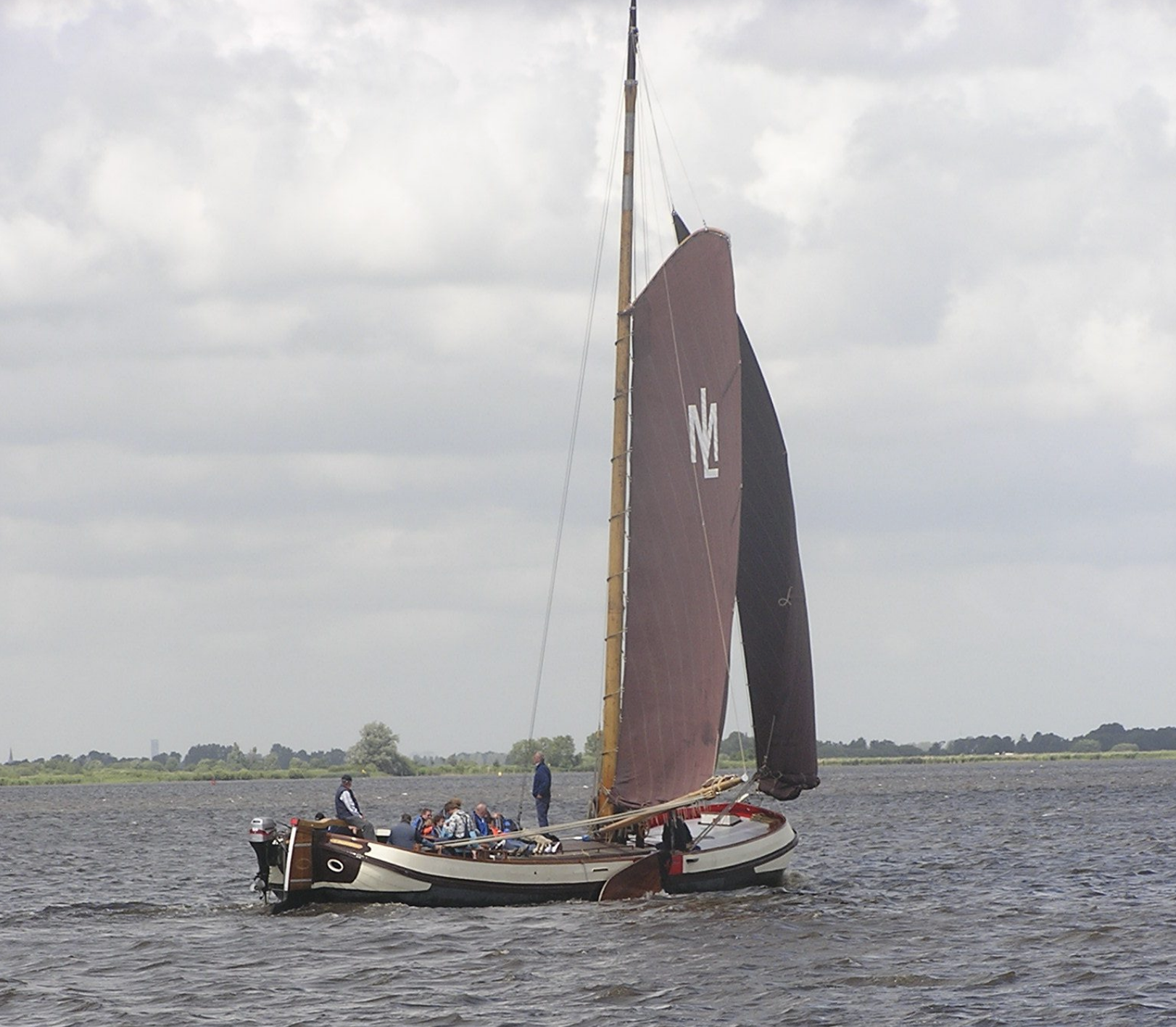Welcome Changes
In the vast and flat landscape of Friesland in the north of the Netherlands lie eleven historic towns linked by canals. They set the stage for a phenomenal ice skating event that is held as soon as the canals freeze over and the ice is solid enough.
The Frisian capital, Leeuwarden, serves as the start and finish location to the Elfstedentocht (Eleven Cities Tour) which covers a nearly 200-kilometer (124-mile) route through the province. It is said that the Elfstedentocht has been skated casually by Frisians since at least 1749 but it was first organized in 1909.
Although it may be the most anticipated sporting event in the country, it has only taken place 15 times since its very first official competition in 1909 (see timeline). The fastest time ever recorded was skated in 1985 when it was completed in 6 hours and 47 minutes! (Now we know why the Dutch dominate international competition in long track speed skating.) The temperature at the start of the race in 1963, now known as “The Hell of '63”, was -18°C (-1°F). That year over 18,000 skaters entered that race and only 127 participants reached the finish.
The ice layer across the entire 200 kilometers needs to be at least 15cm (6”) thick. The last Elfstedentocht to-date was held in 1997 and was also super challenging with strong winds 20-30 mph (Force 5-6) and freezing temperatures, creating a windchill of -10°C to -15°C (5°F-14°F).
The route passes through beautiful scenery and, of course, through the 11 Frisian cities. Skaters pass lakes, ditches, polders, and meadows.
We arrived in the Frisian capitol of Leeuwarden on a beautiful fall evening. Here the canal, bordered by a beautiful park, twists and turns gently through the city. We tied up for the night along a grassy bank beneath some giant trees.
The next morning we wondered into Leeuwarden proper in search of coffee and breakfast. Apparently the town has over 600 monuments. In the center of the city sits the Oldehove Church Tower. Construction began on the tower in 1529 but when it was only ten meters high it began to tilt. The builders tried to compensate for the lean, but the project was stopped in 1532 or 1533. Sixty years later the then derelict church was demolished, but the tower remained. The top of the tower is displaced horizontally 2 meters (6 ft. 7 in.) from the center.
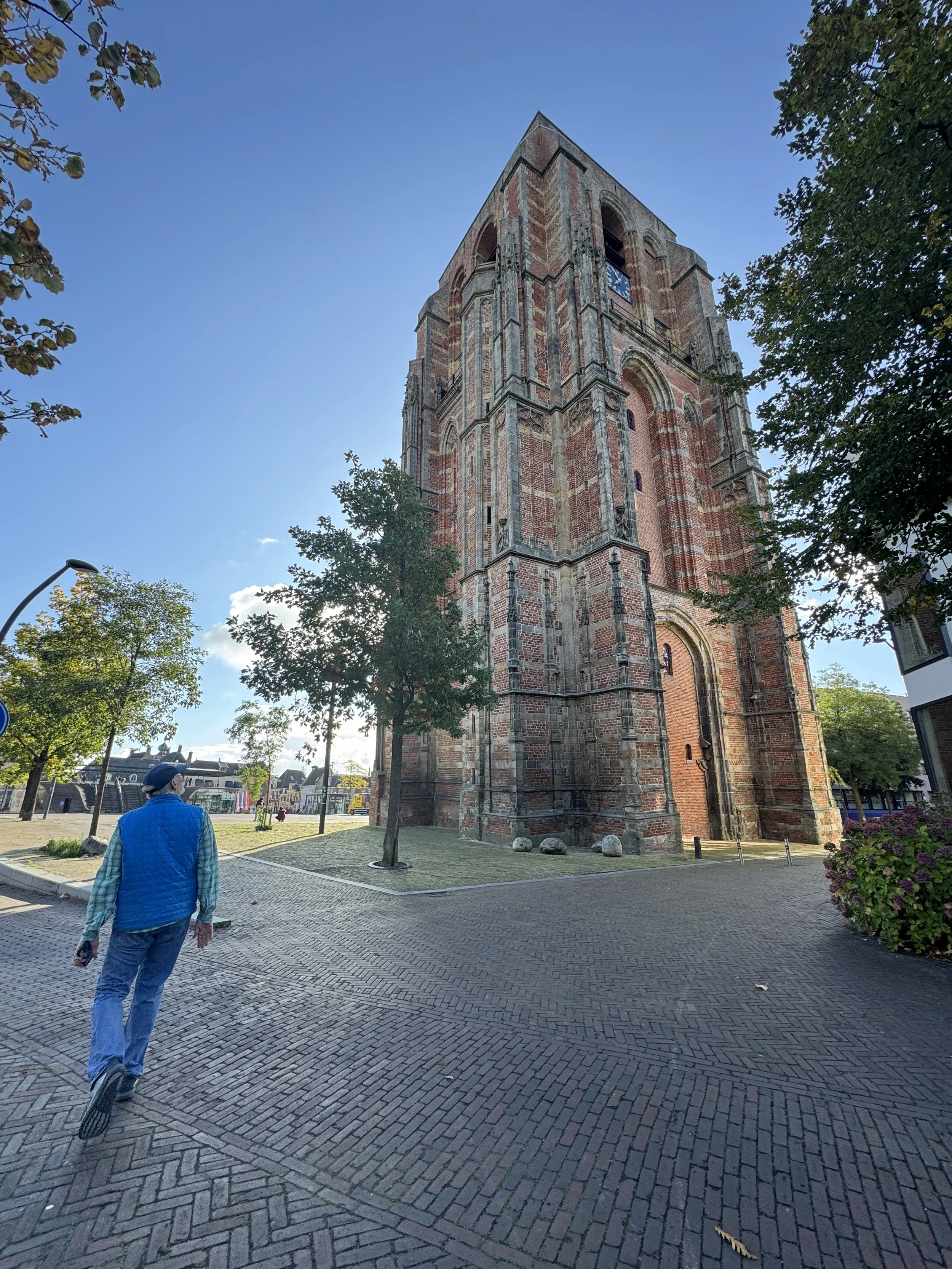
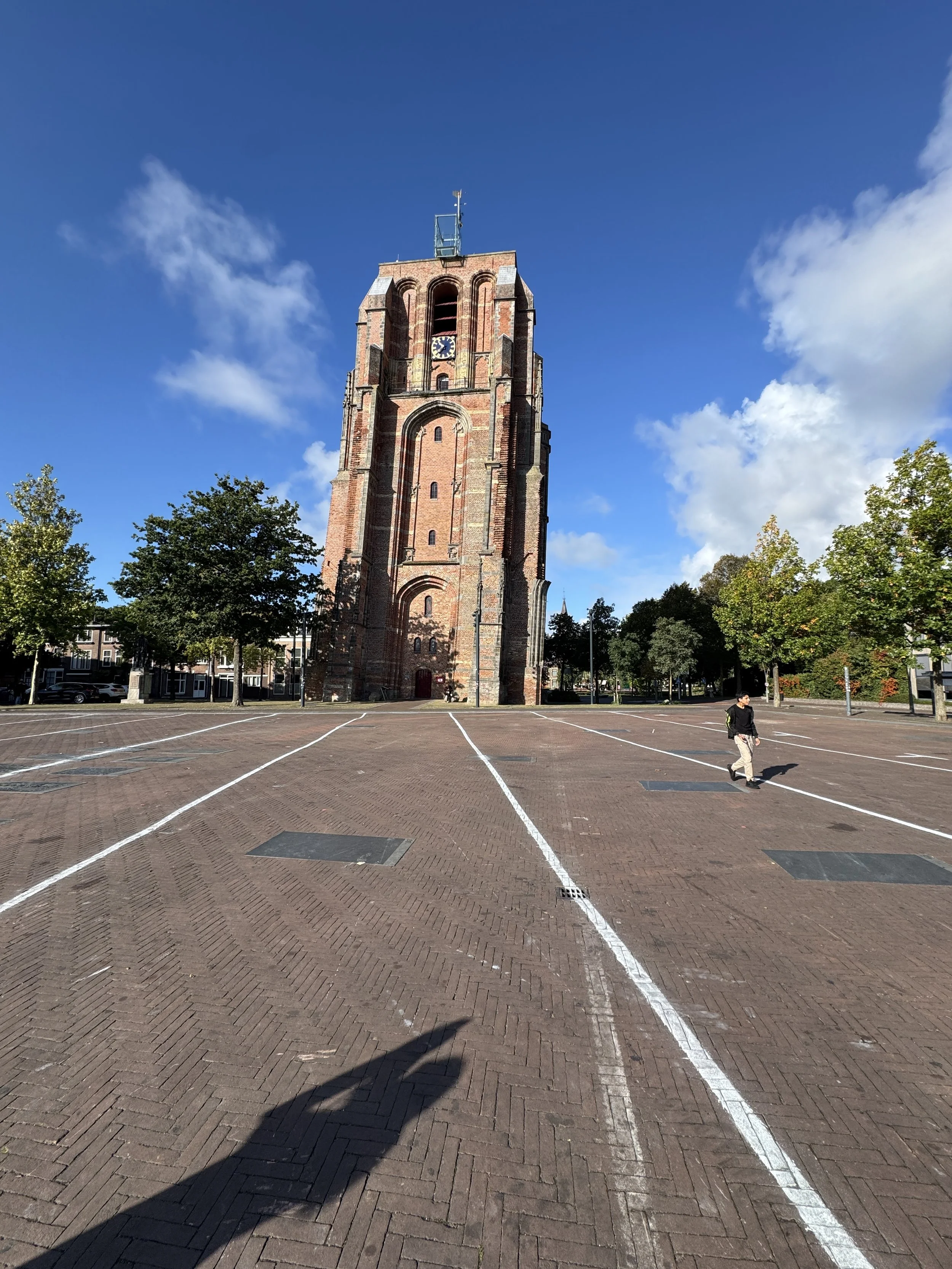
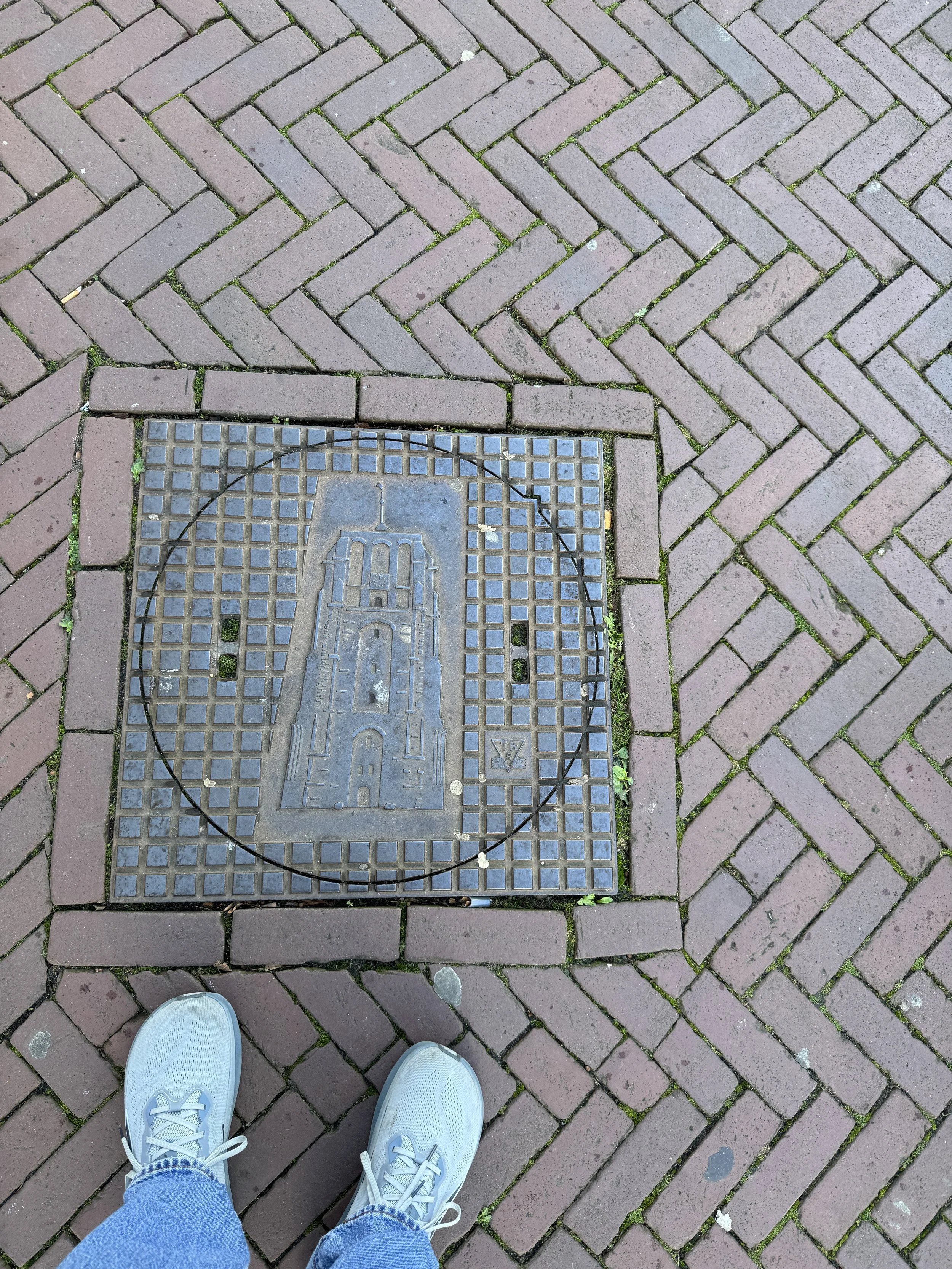

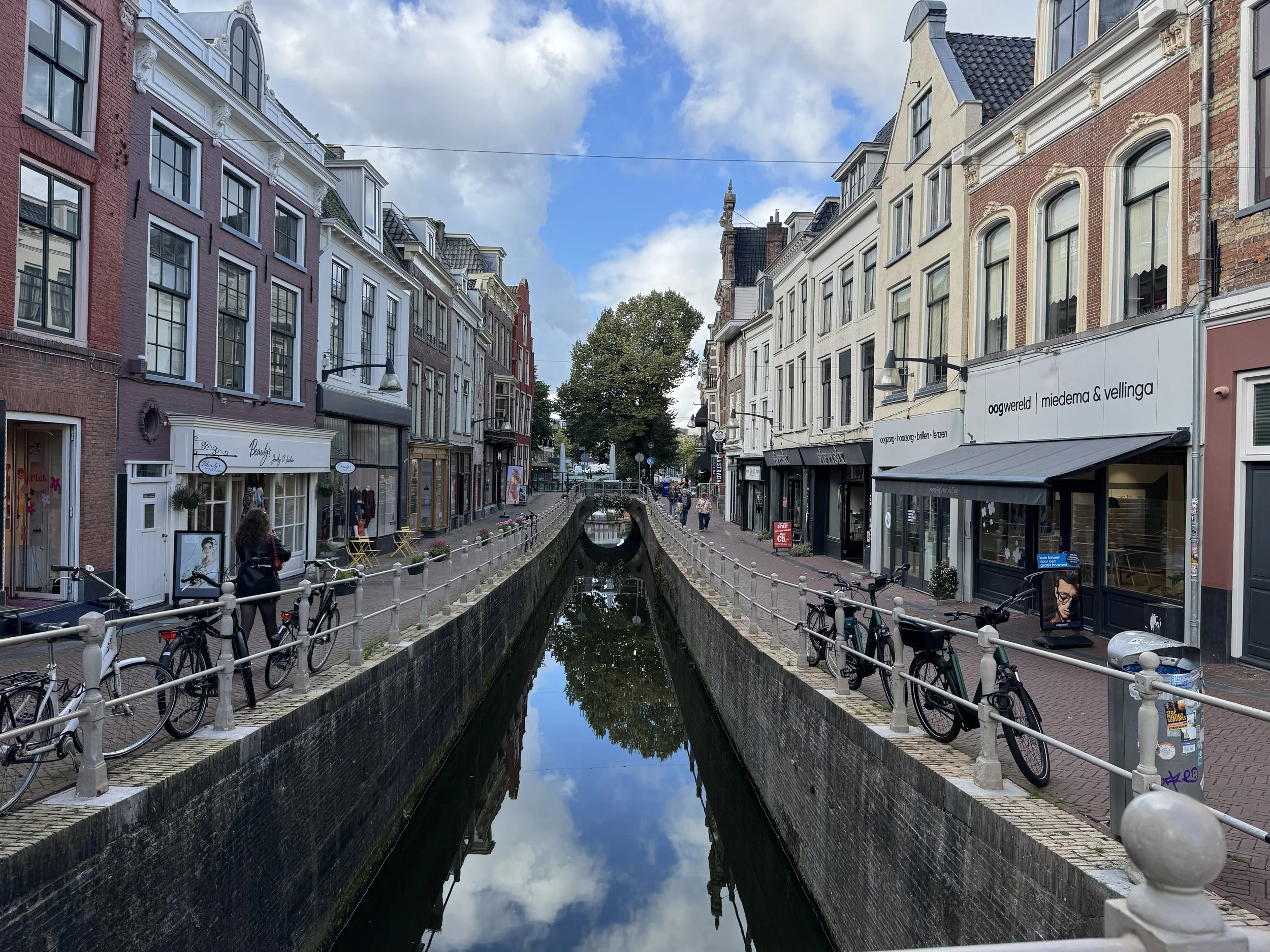


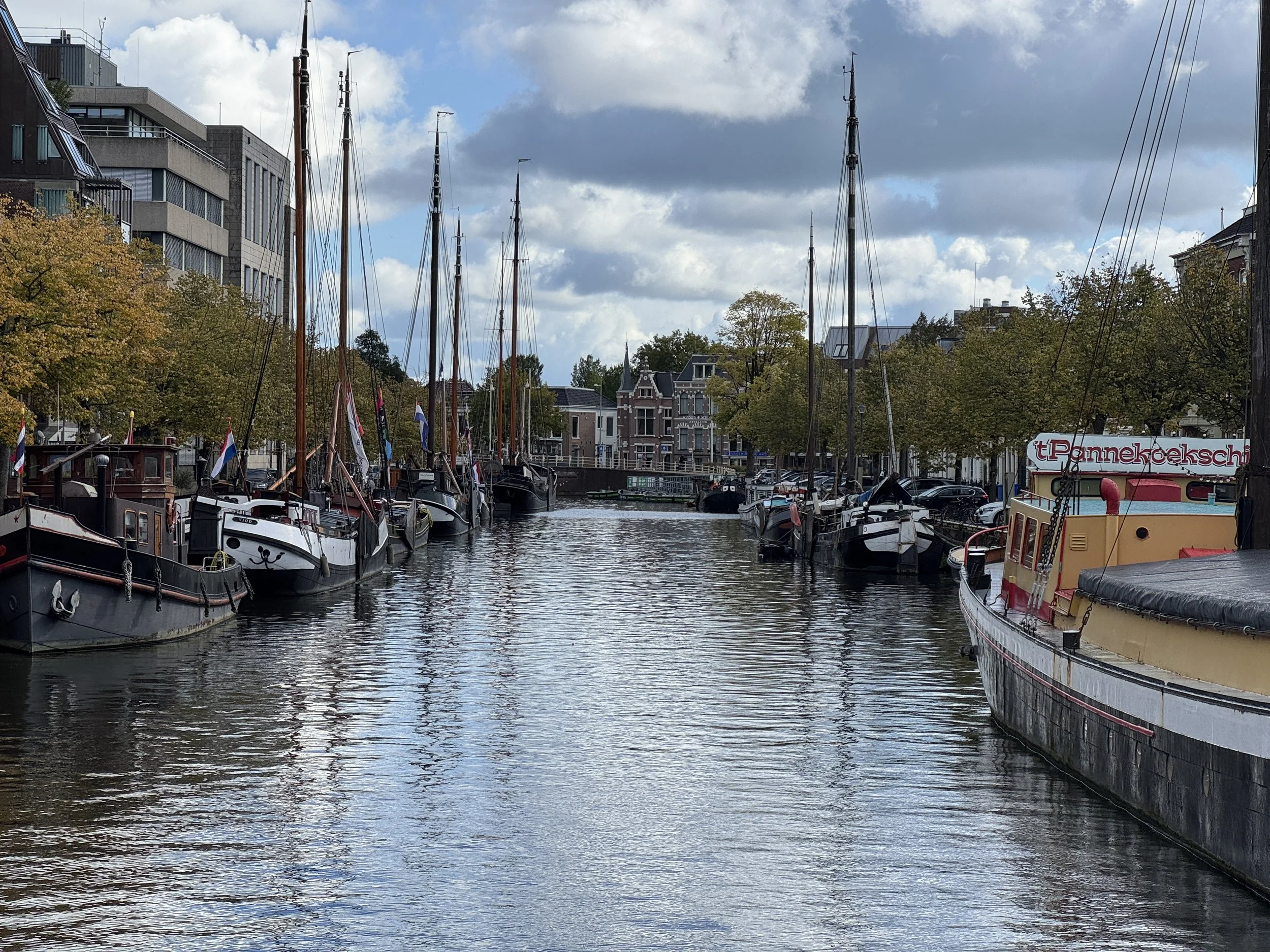


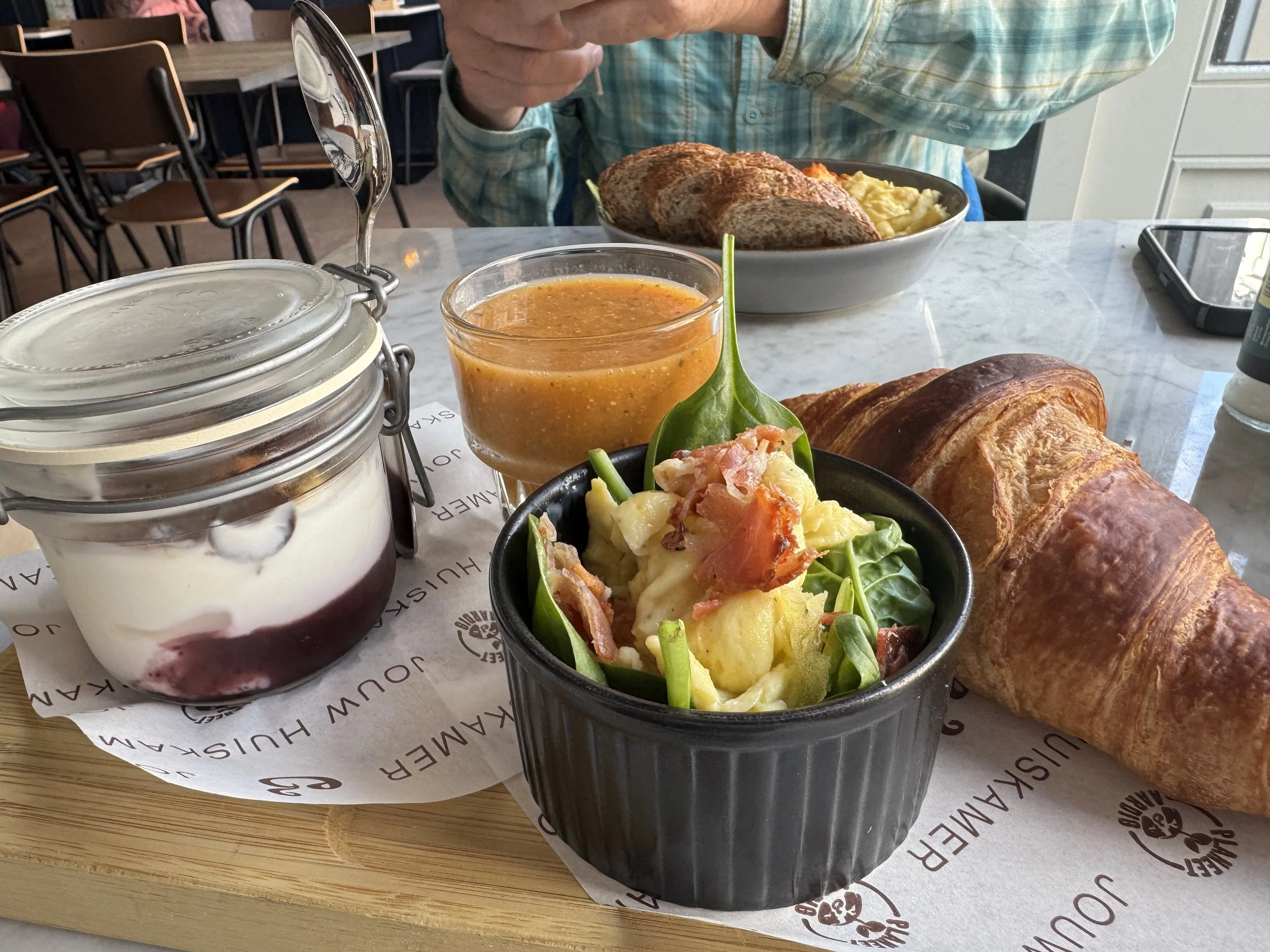
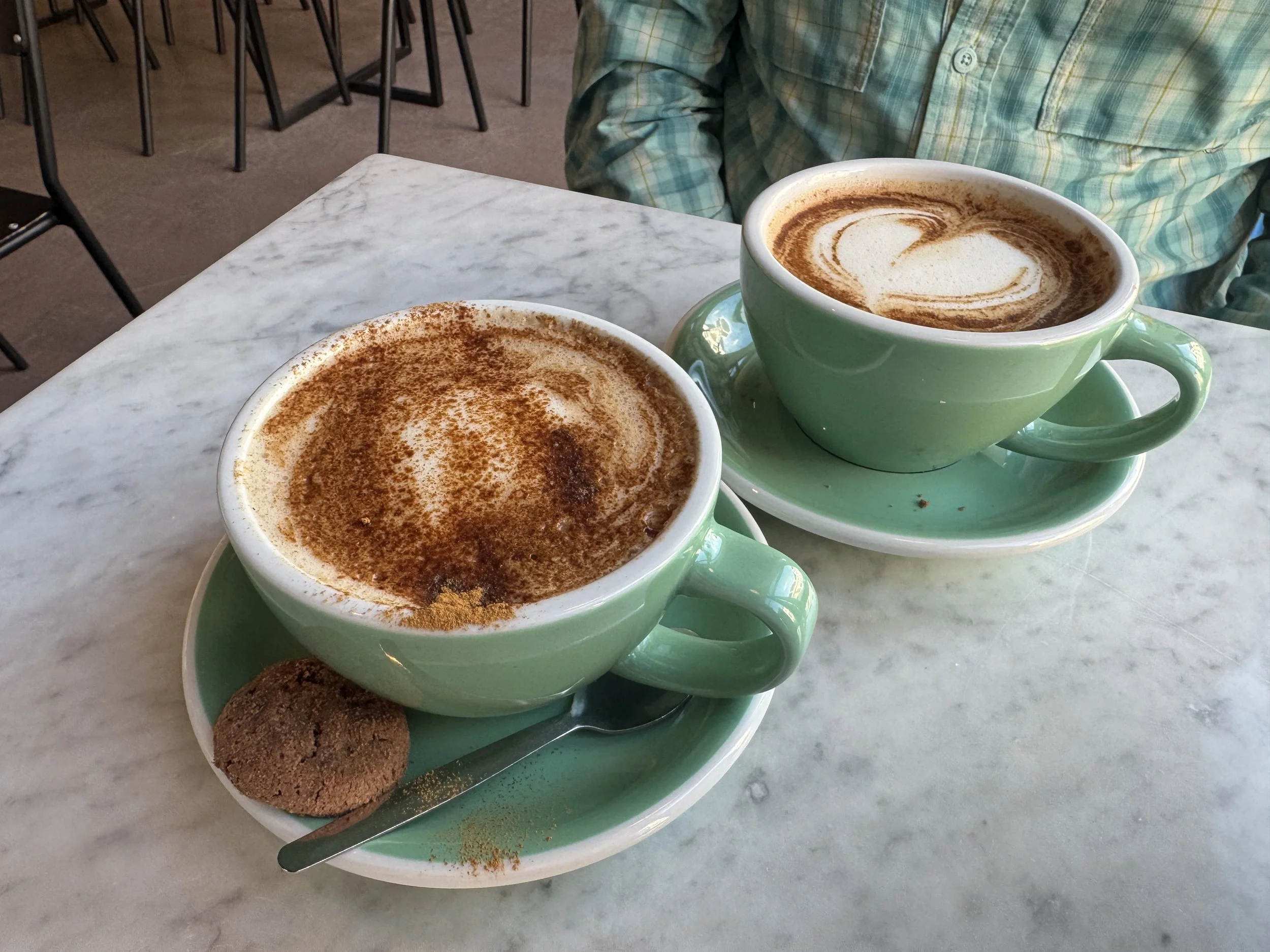
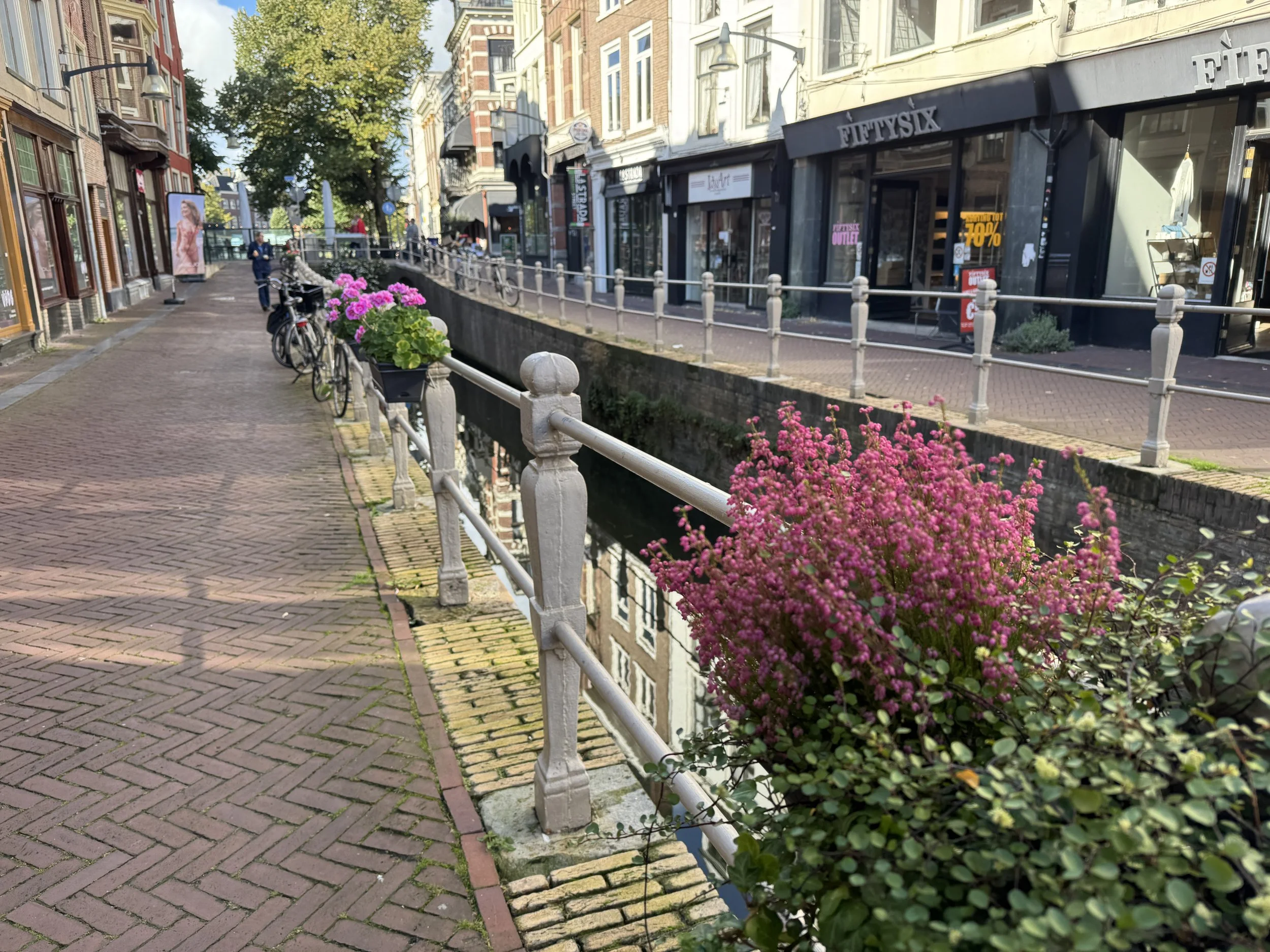



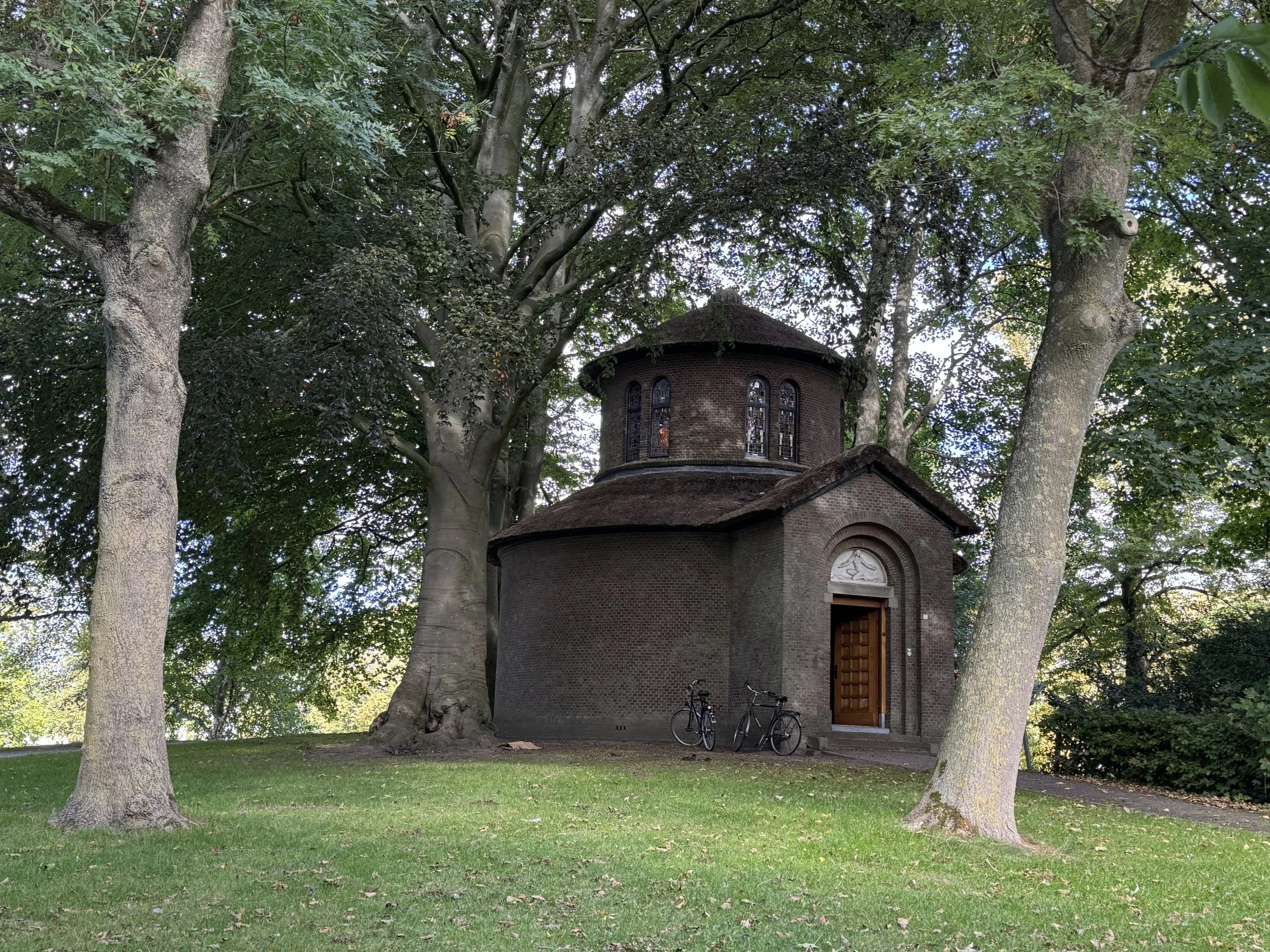
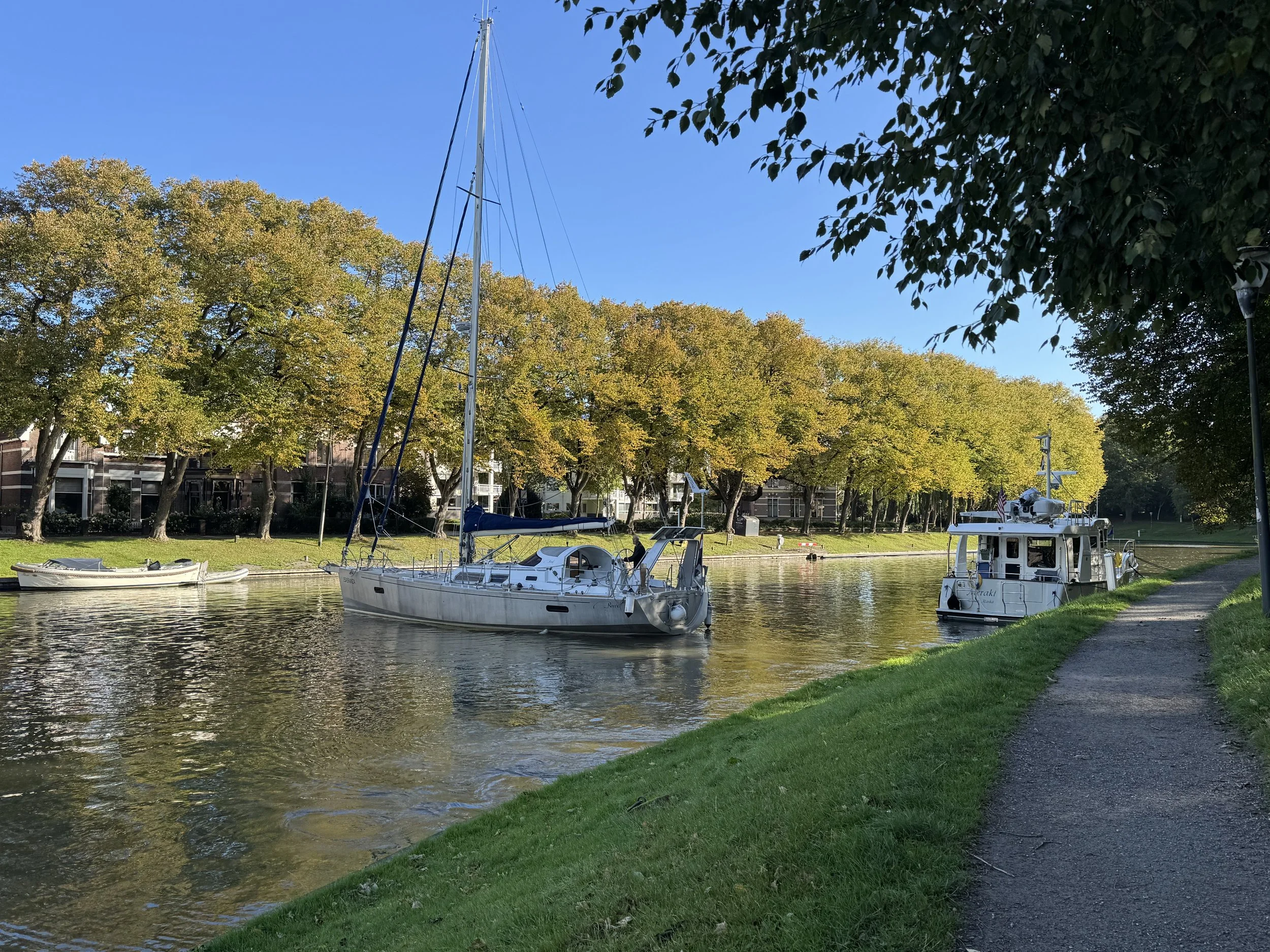
After a leisurely morning and stroll through the park, we set off. The passage to Grou, our next stop, was delightful. We floated past gorgeous country side, through ancient villages and perfectly manicured newly constructed canal-side neighborhoods. The slow pace and the serenity of the sights allowed time to relax, make art, bake bread and daydream.
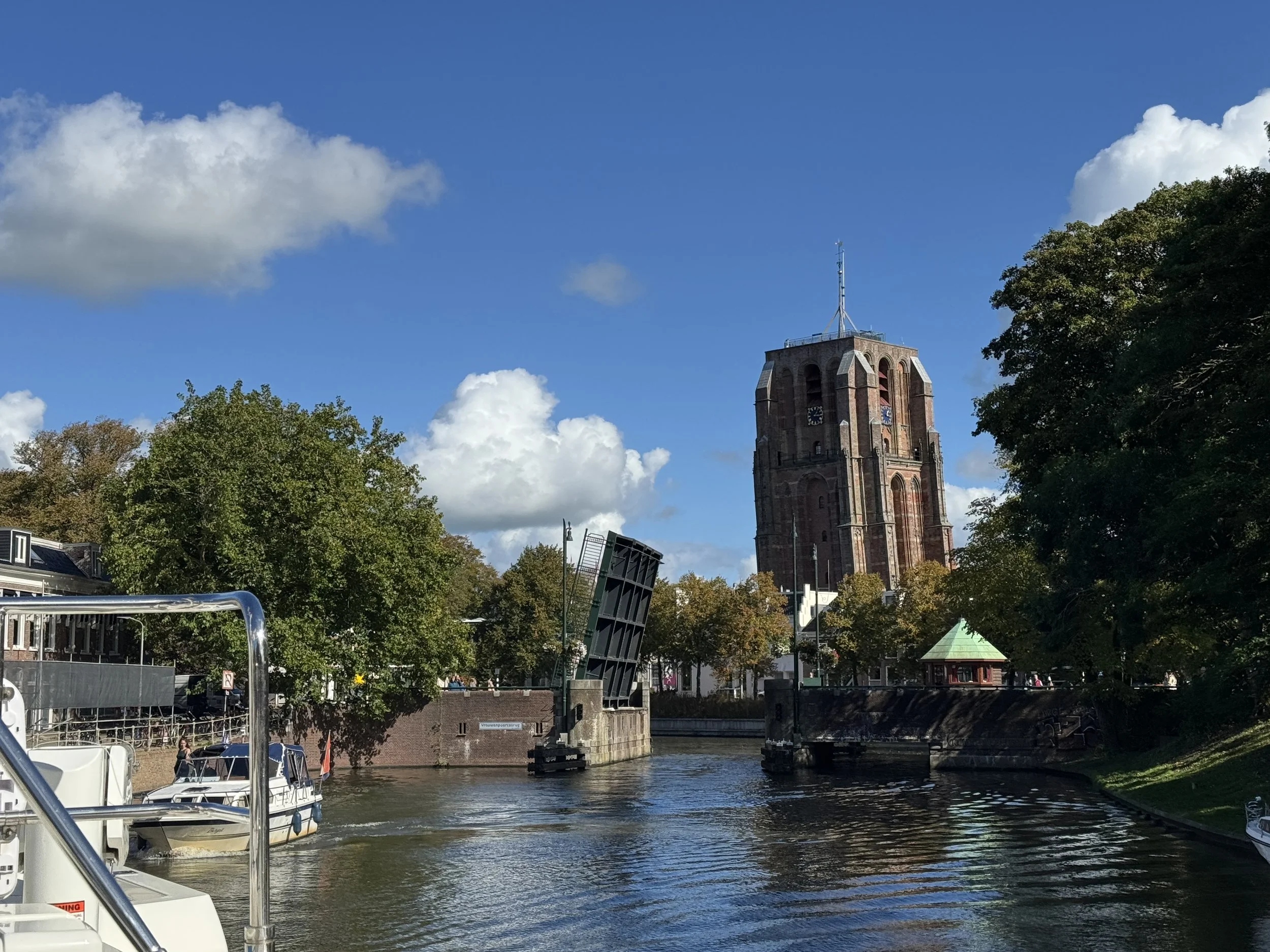
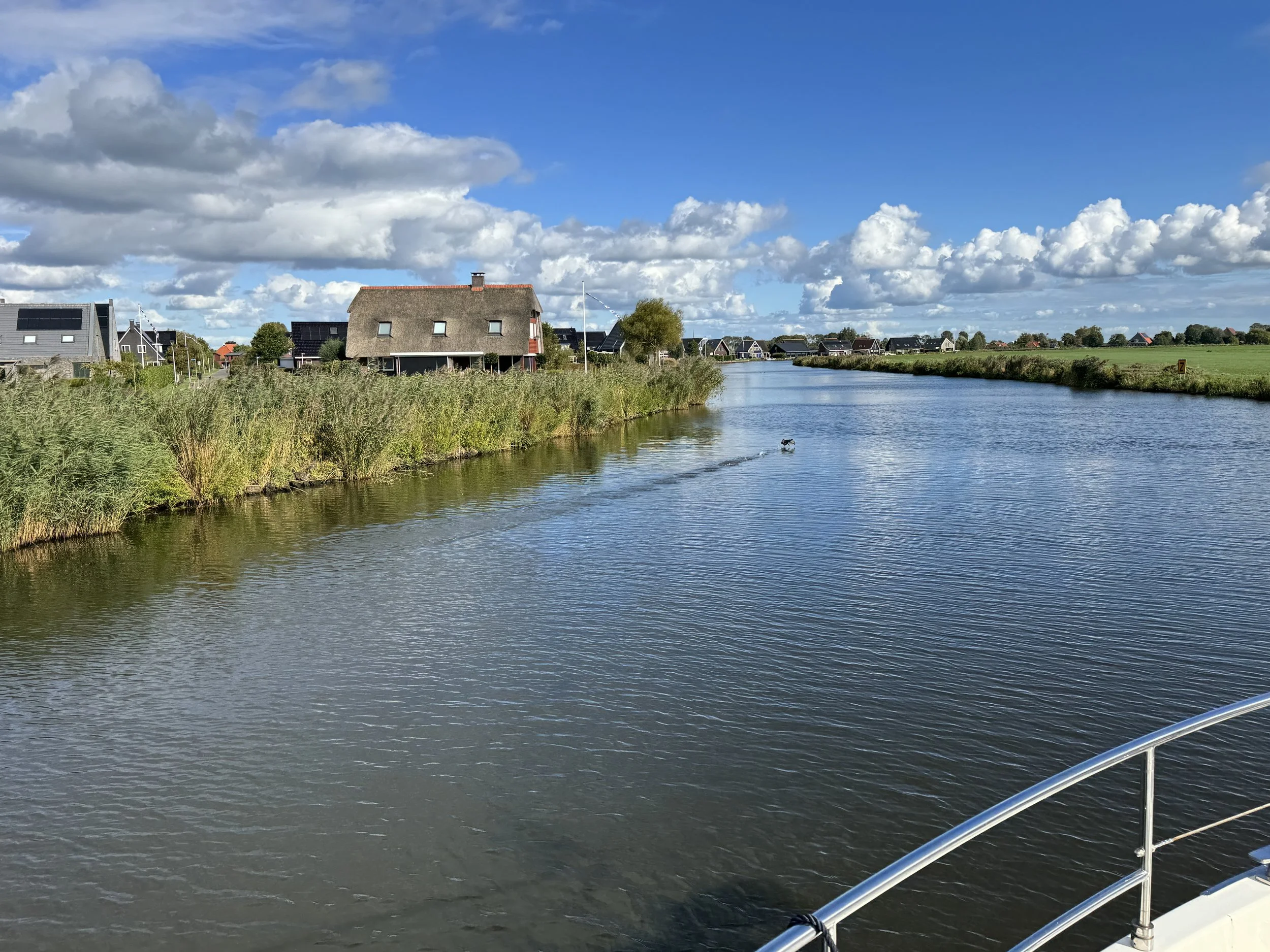

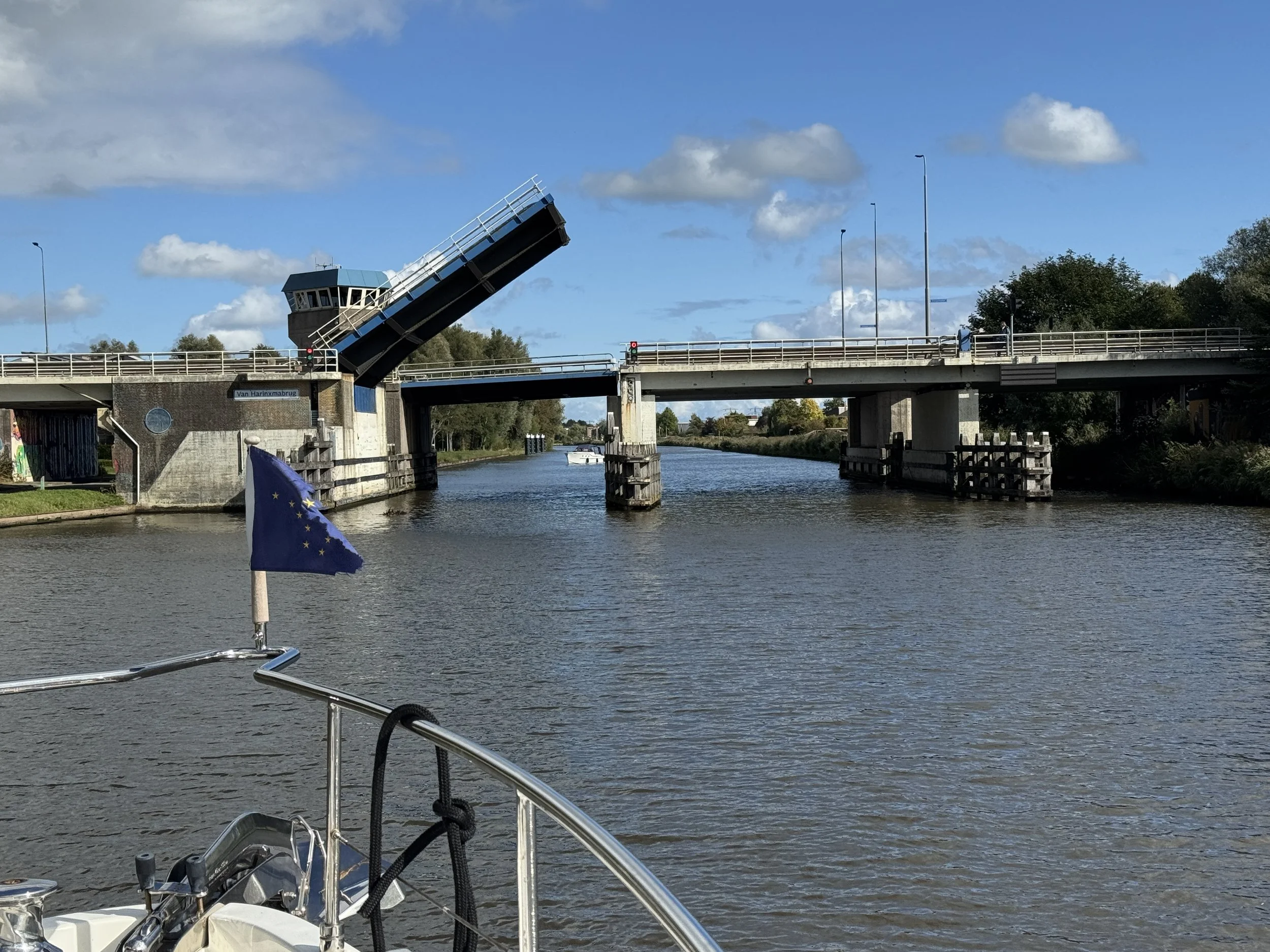


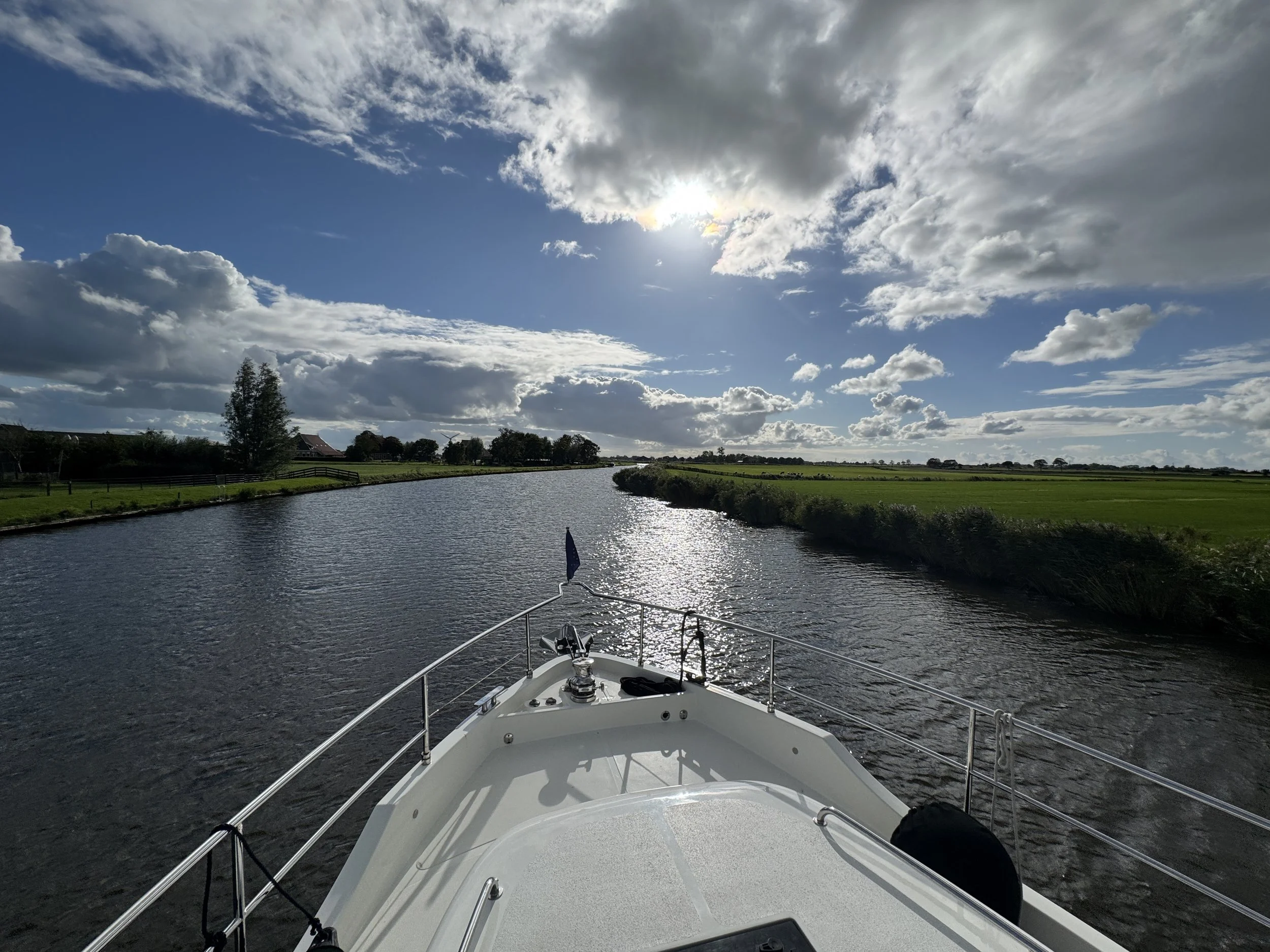


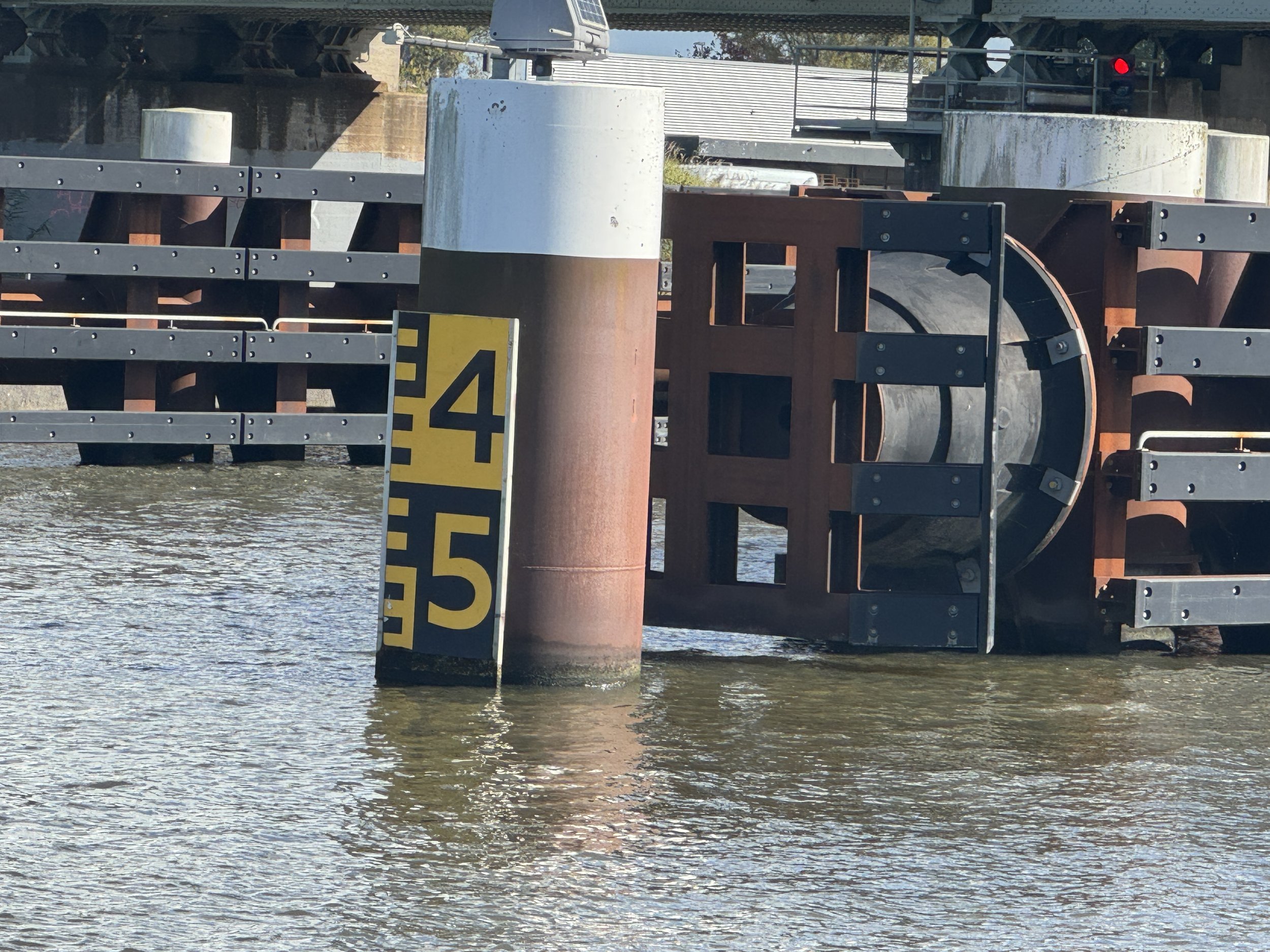
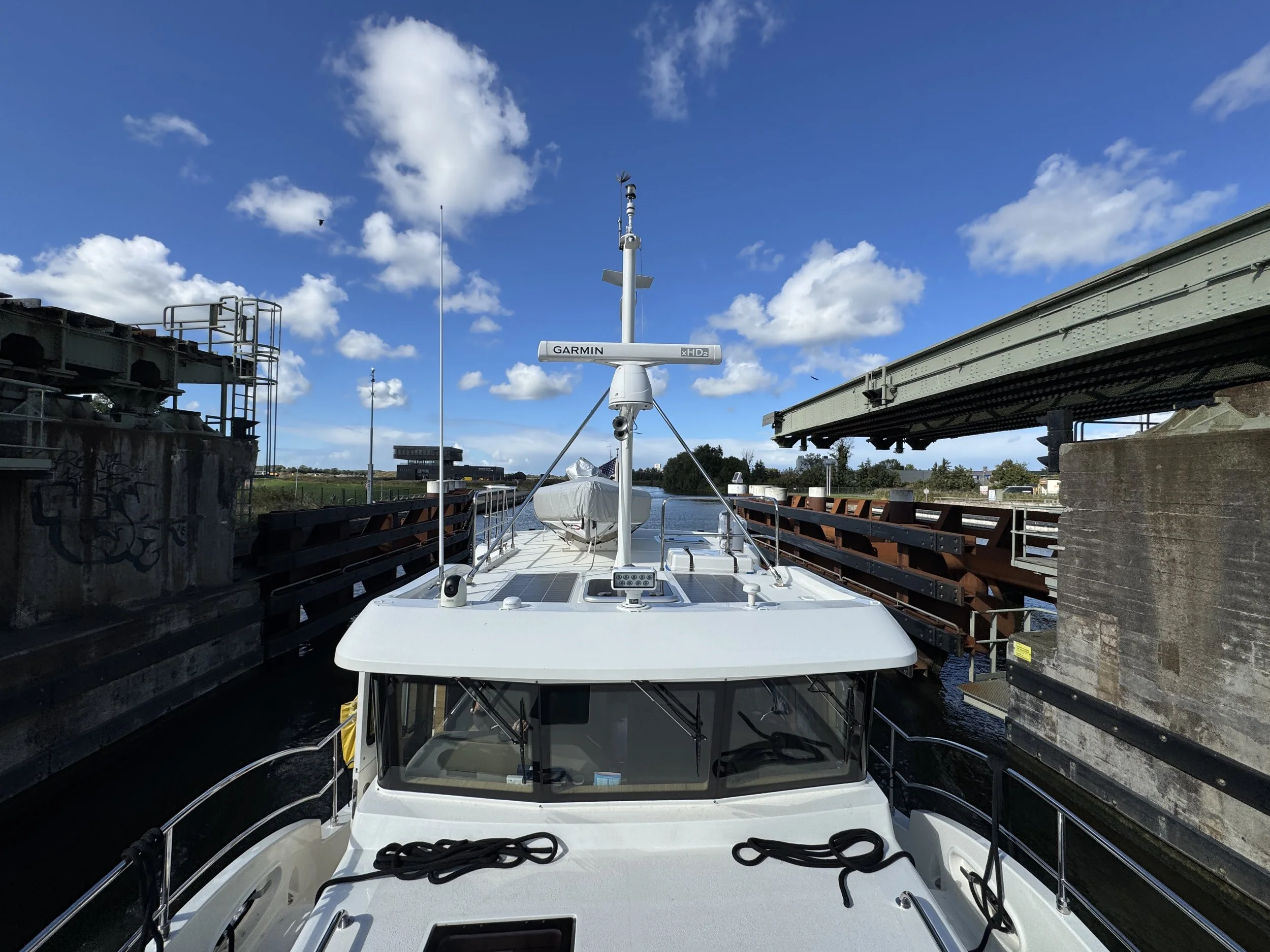
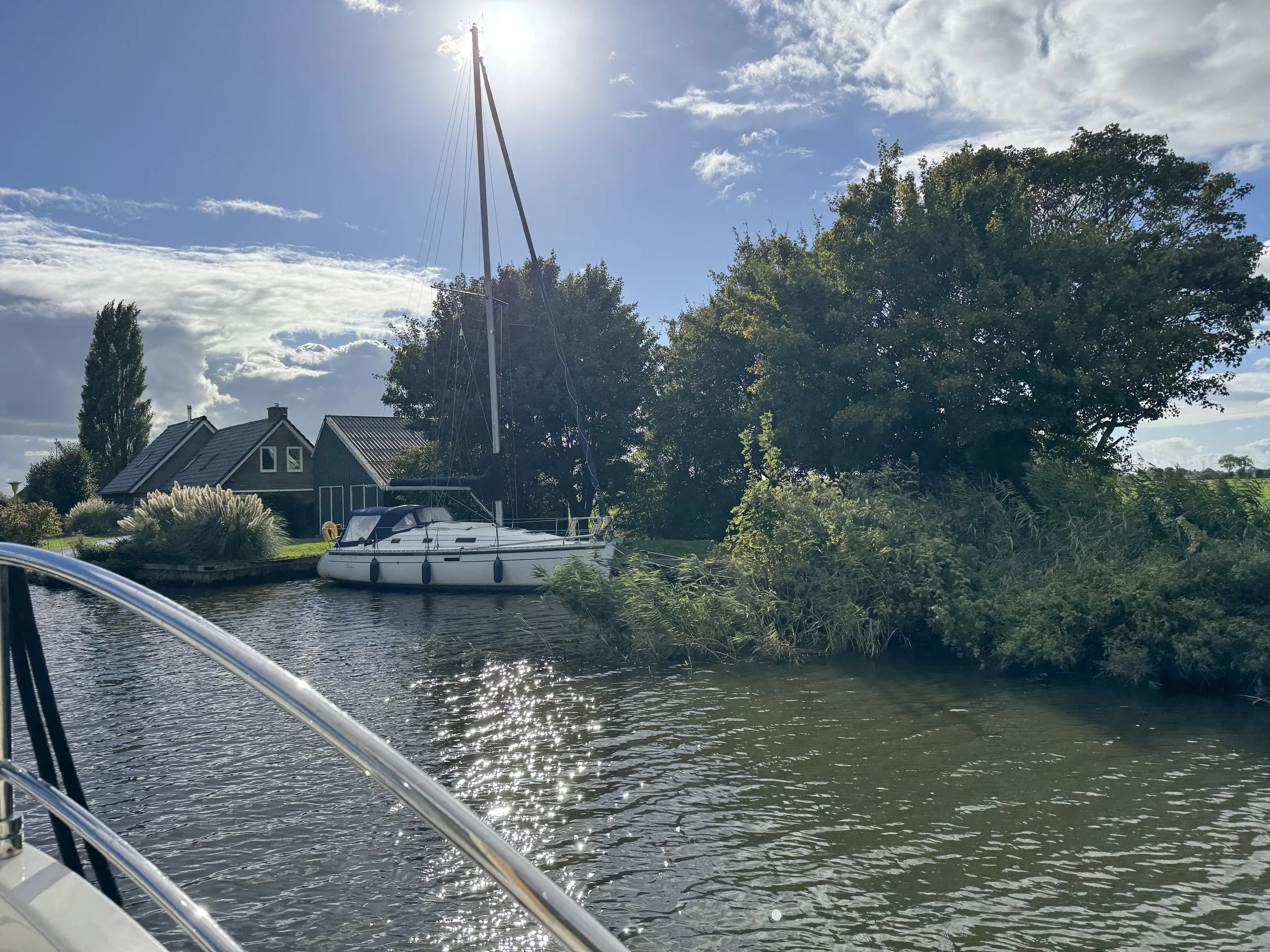
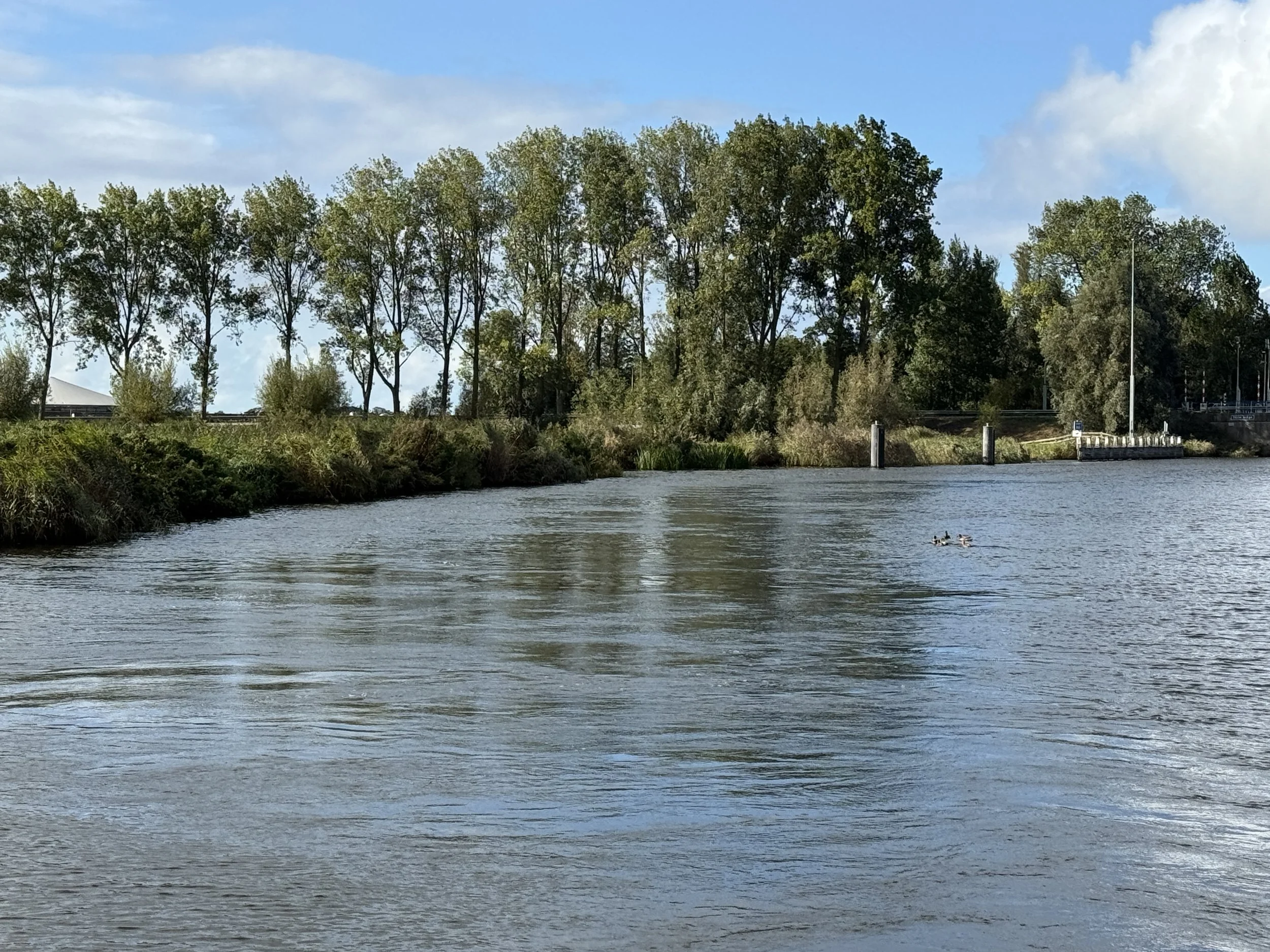



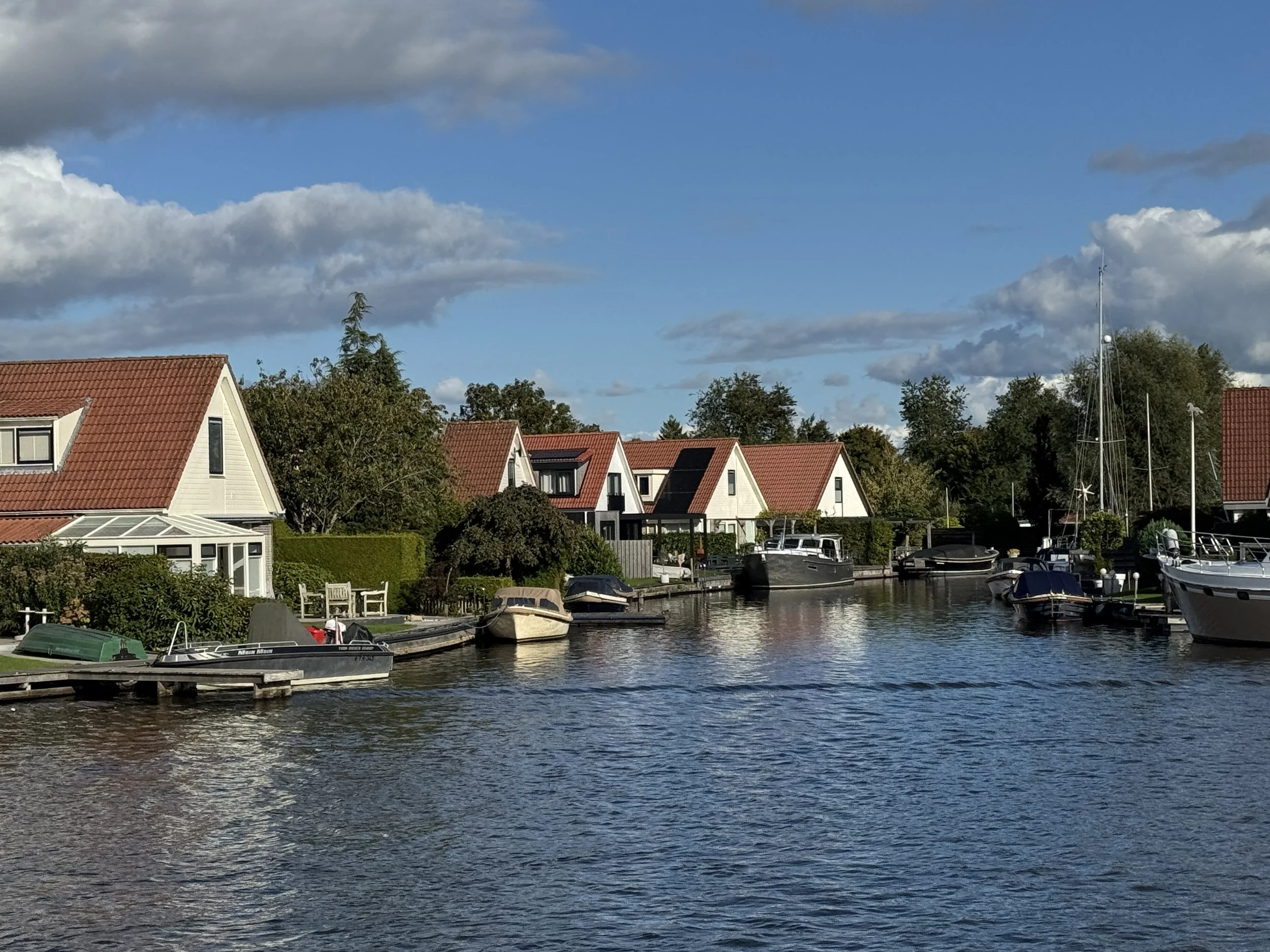
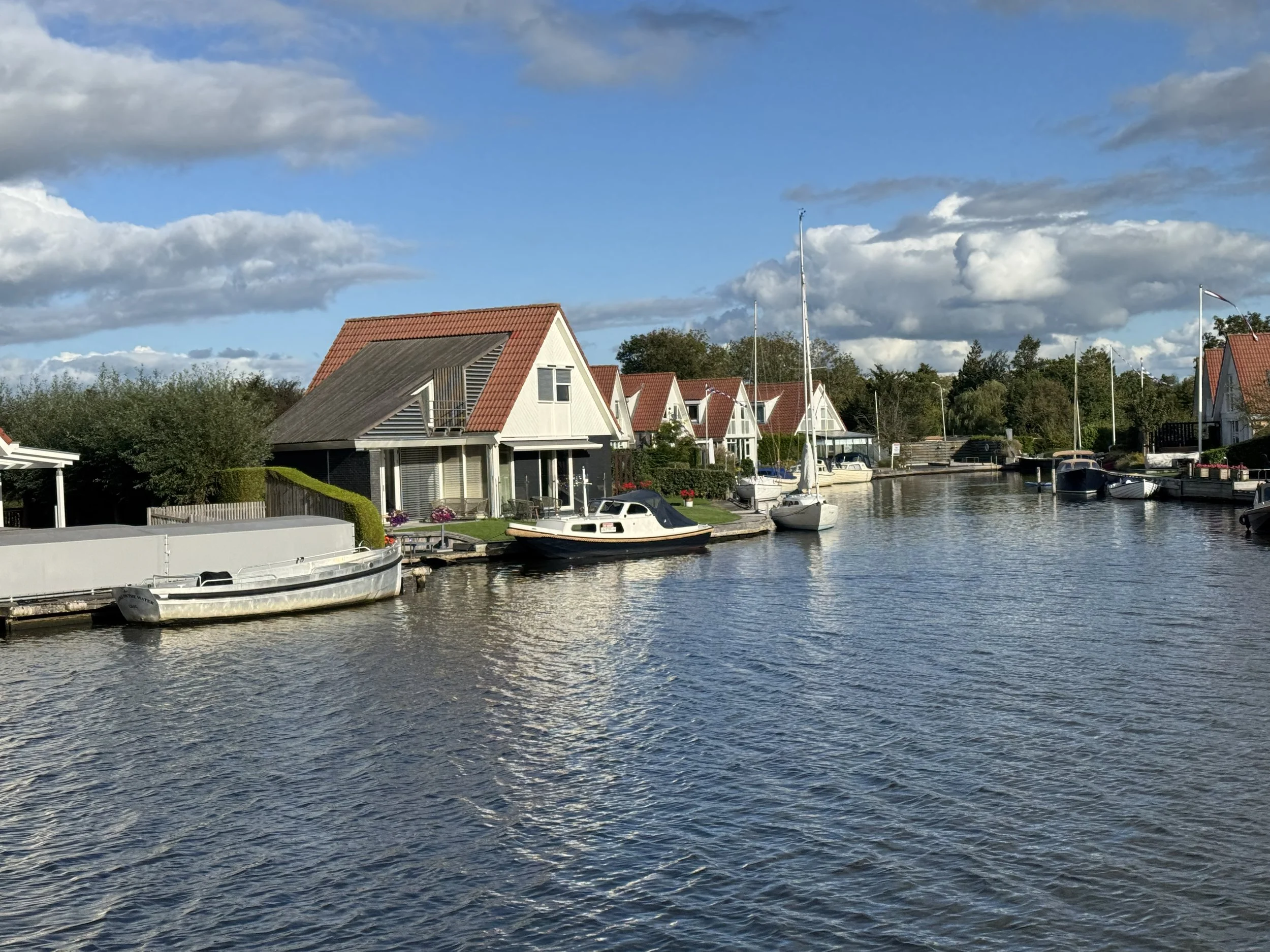
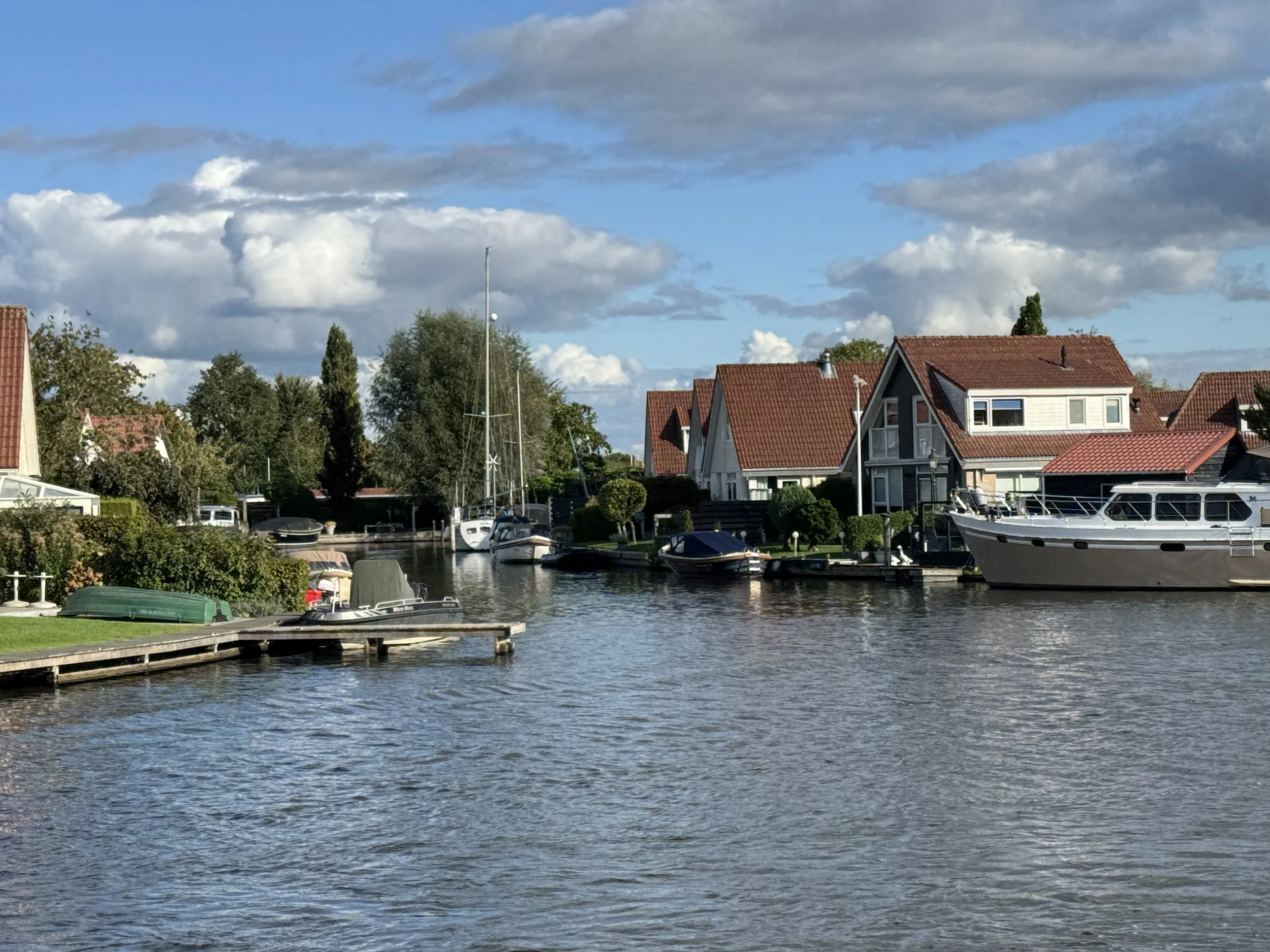
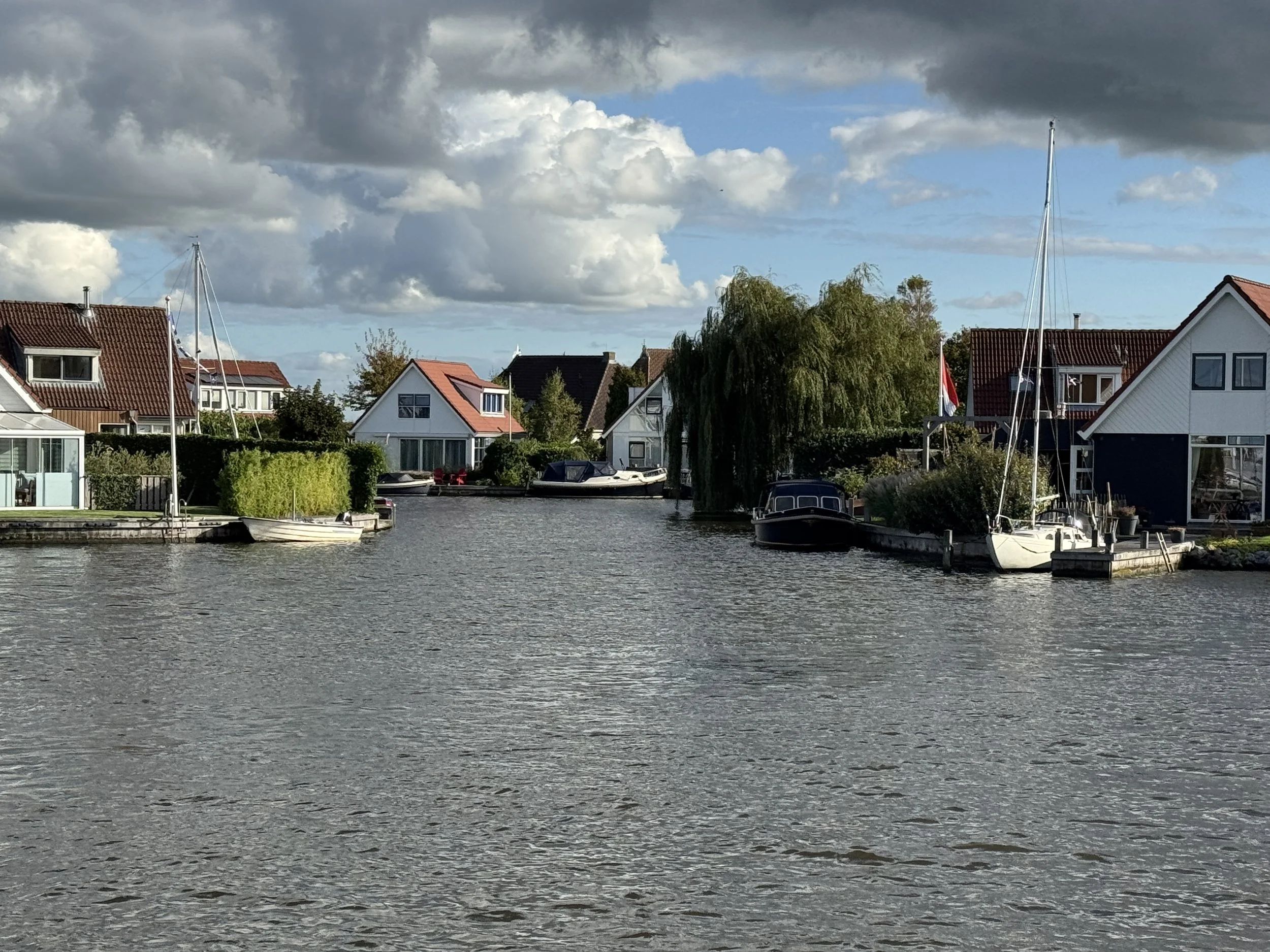

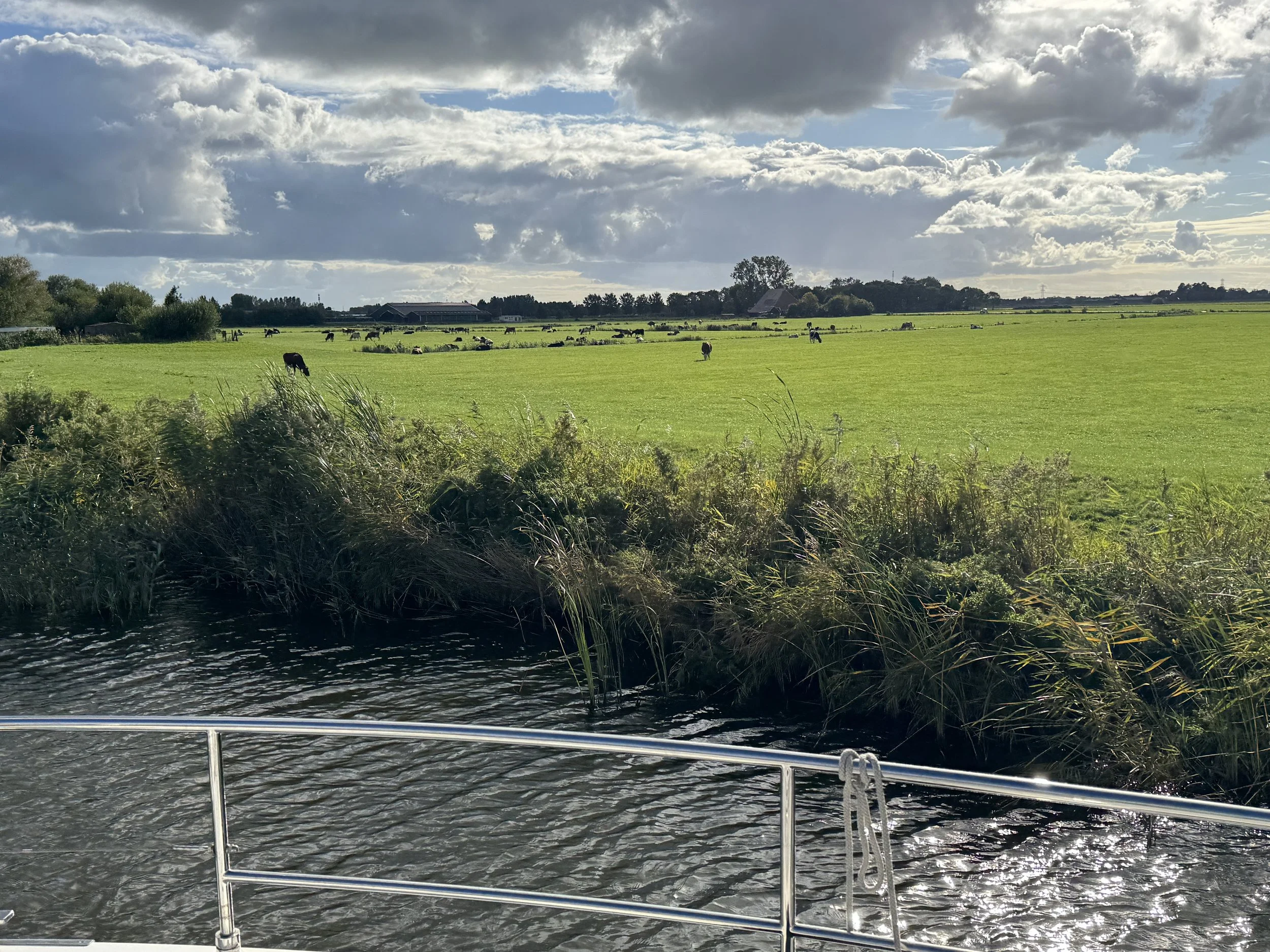
Photo: Henk Frankema
We arrived in Grou in late afternoon and immediately went for a walk. The town is situated near several lakes, making it a popular spot for sailing, boating, canoeing, and paddle-boarding. There are beautiful biking routes here through meadows, around lakes, past windmills, and along the canal. Birdwatching and hiking are also popular.
The village is comprised of traditional Frisian architecture while the harbor is full of traditional Frisian boats - called "skûtsjes." This traditional Dutch barge may be made of wood or steel and was originally used to transport freight in Friesland such as soil, potatoes and other bulk goods. Today they are used to teach traditional sailing methods and there is an annual race called the Skûtsjesilen, which literally means “competitive sailing with old cargo ships”. The racers visit various villages and the Elfstedentocht (Eleven Cities).
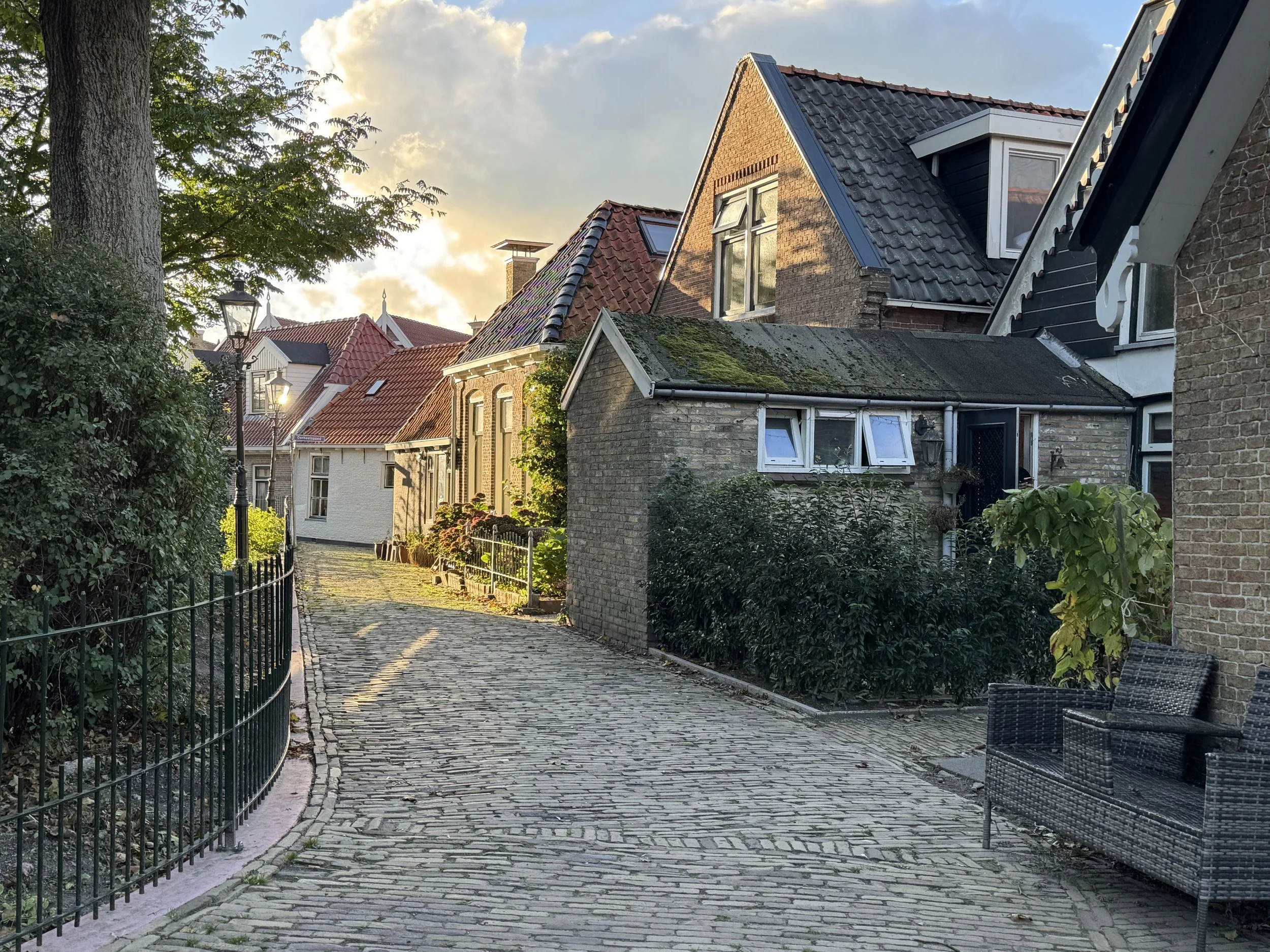

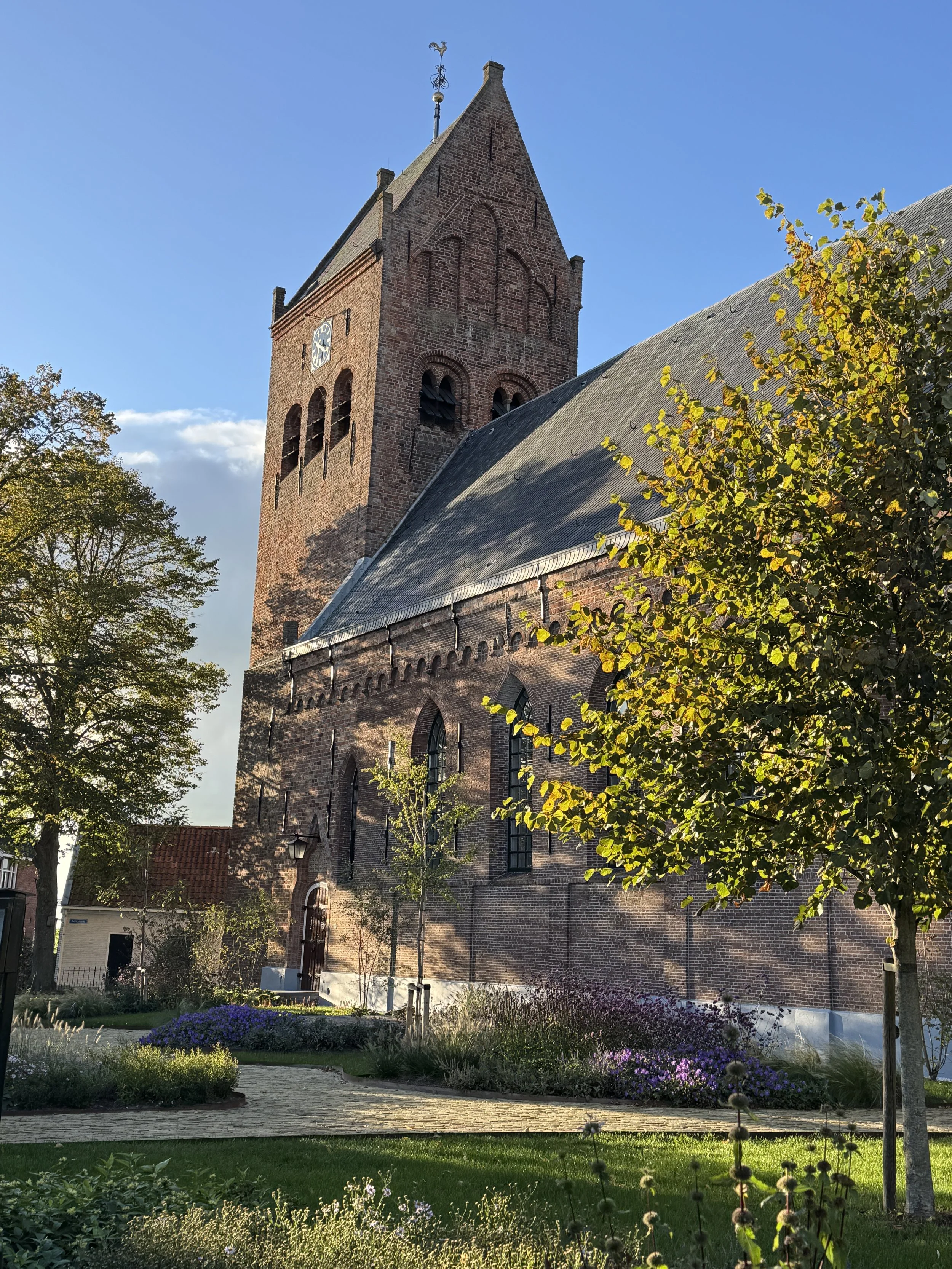

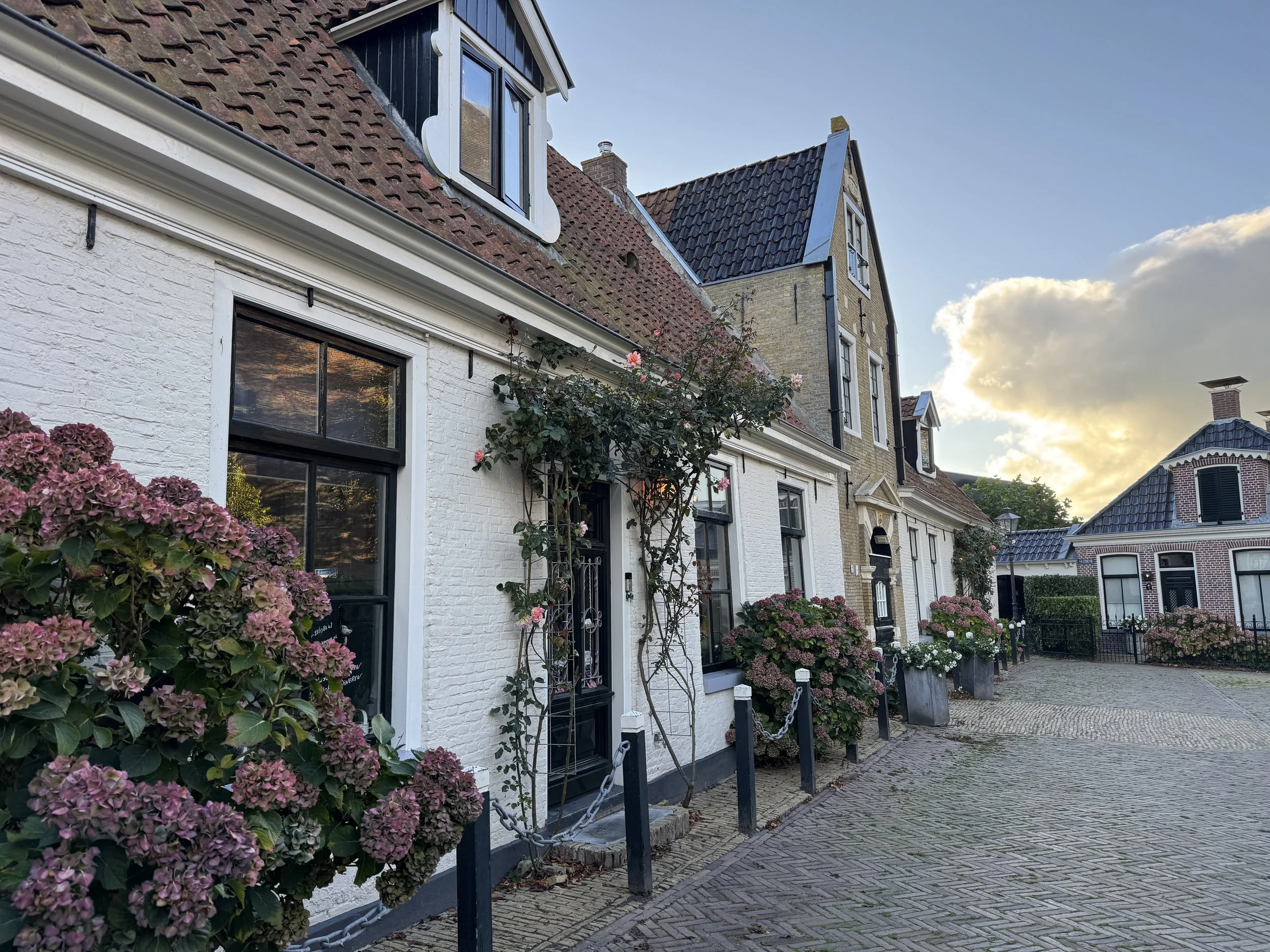


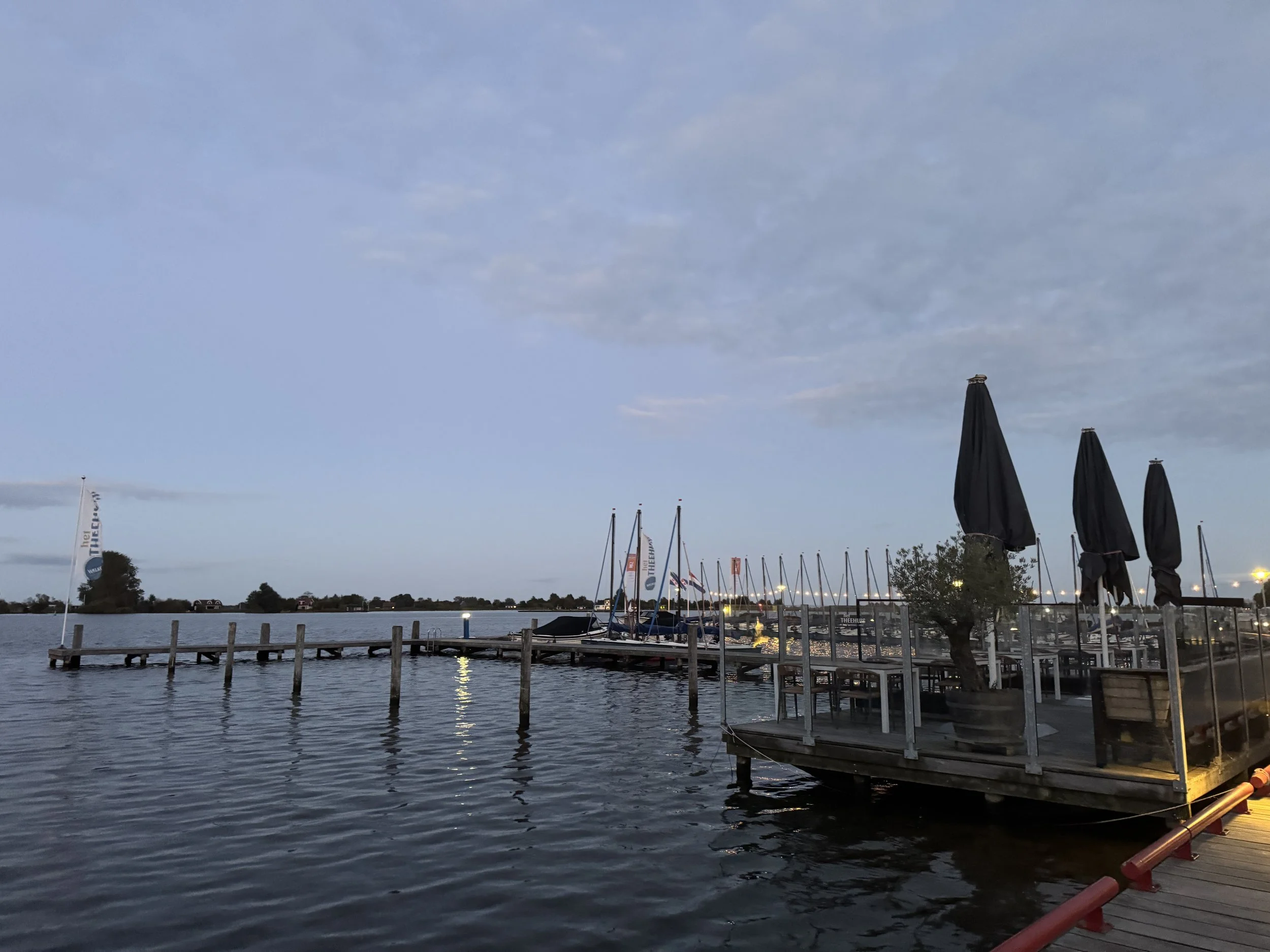
We followed whats known as the "Staande Mast Route” or standing mast route. This refers to a series of inland waterways and connected bridges and locks that allow sailboats and other high air-draft vessels to travel through and around several of the inland waterways of the Netherlands.
We left at dawn hoping to get all the way to Amsterdam. We took the Staande Mast Route route southwest out of Grou to Lemmer where we exited through the Prinses Margriet Lock at 10:30am and out into the IJsselmeer.
It was windy on the big lake and the waves in the shallow water were choppy and confused, but it felt great to be in a vast expanse of water once again.


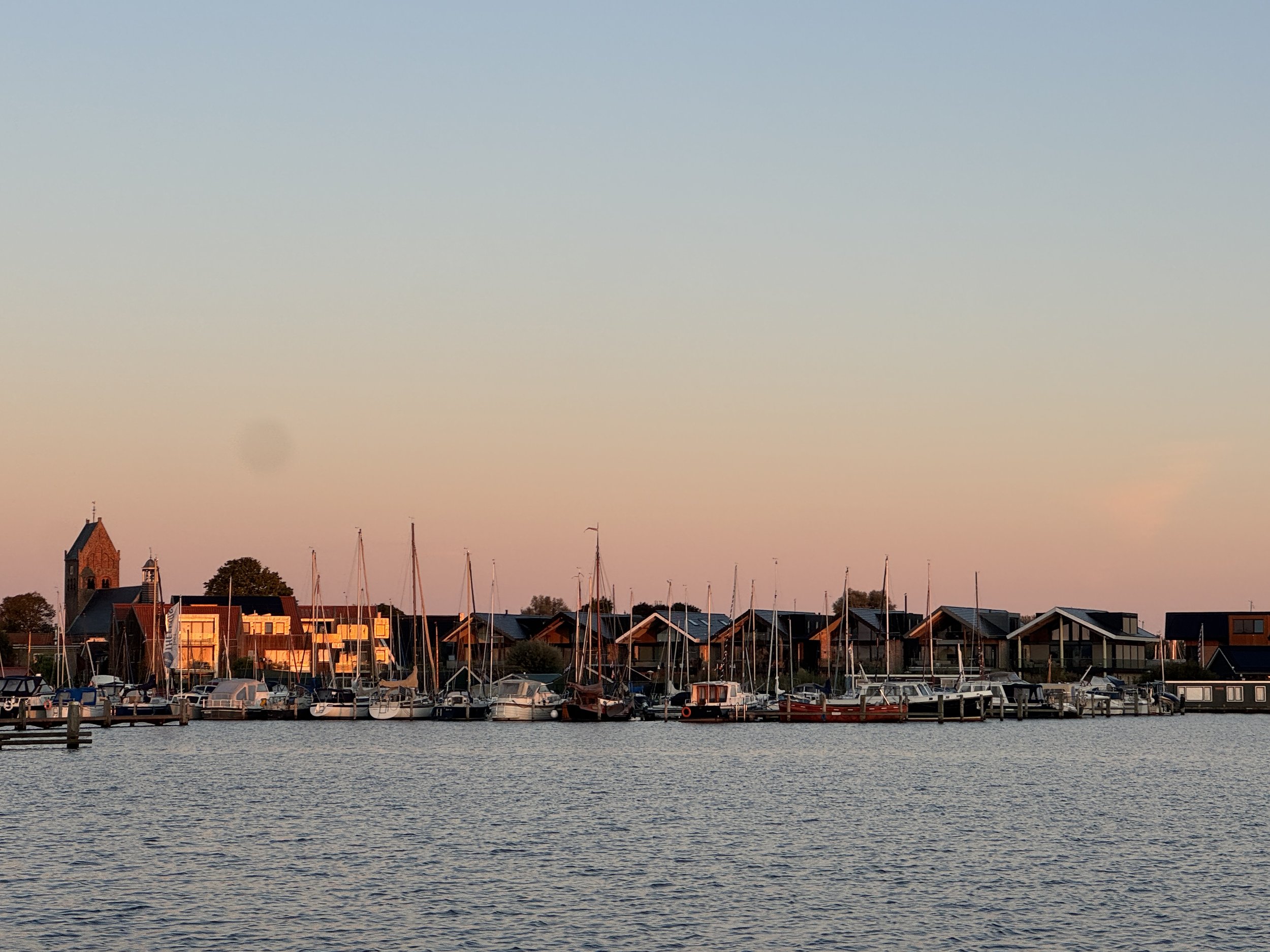
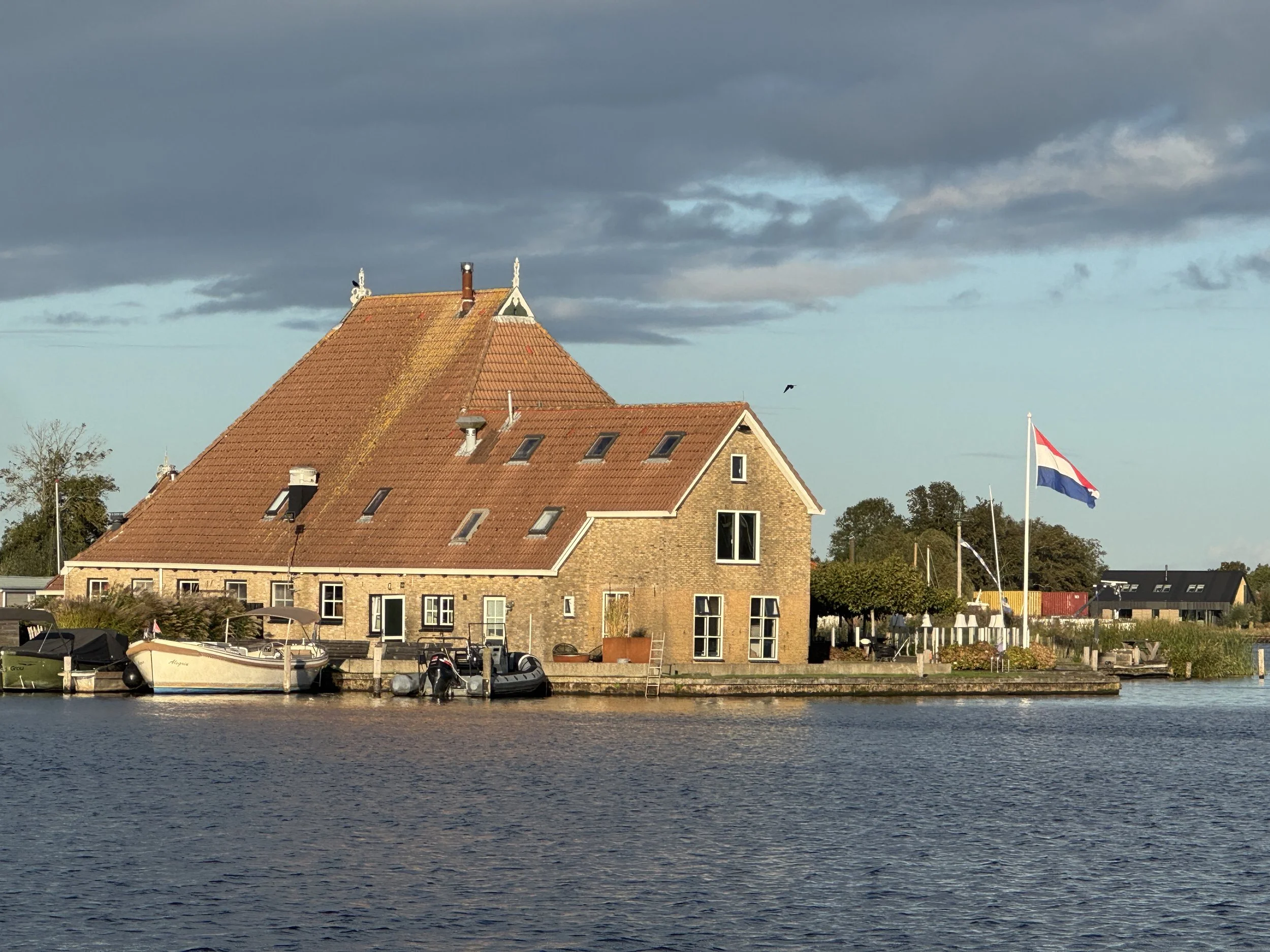
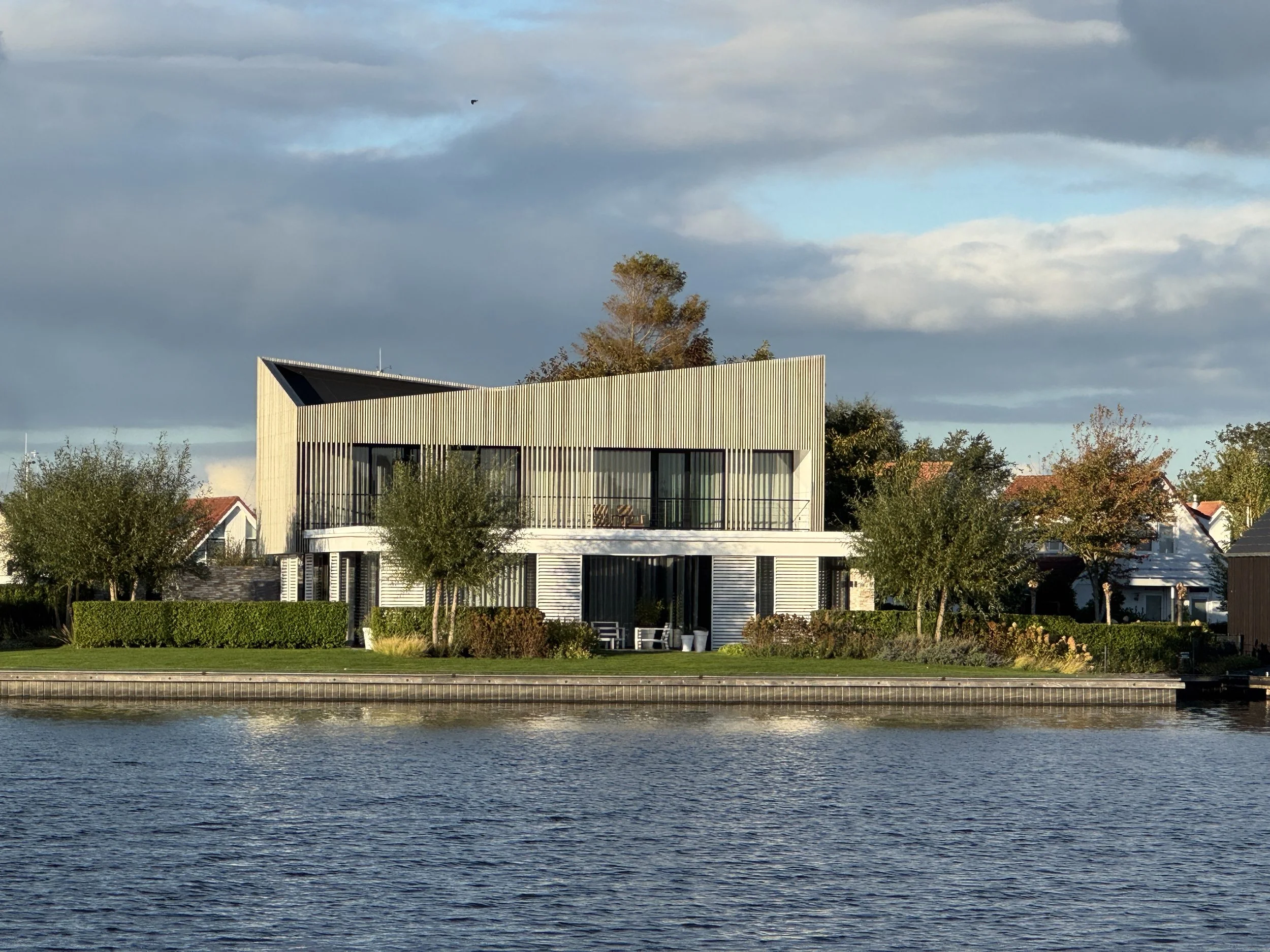
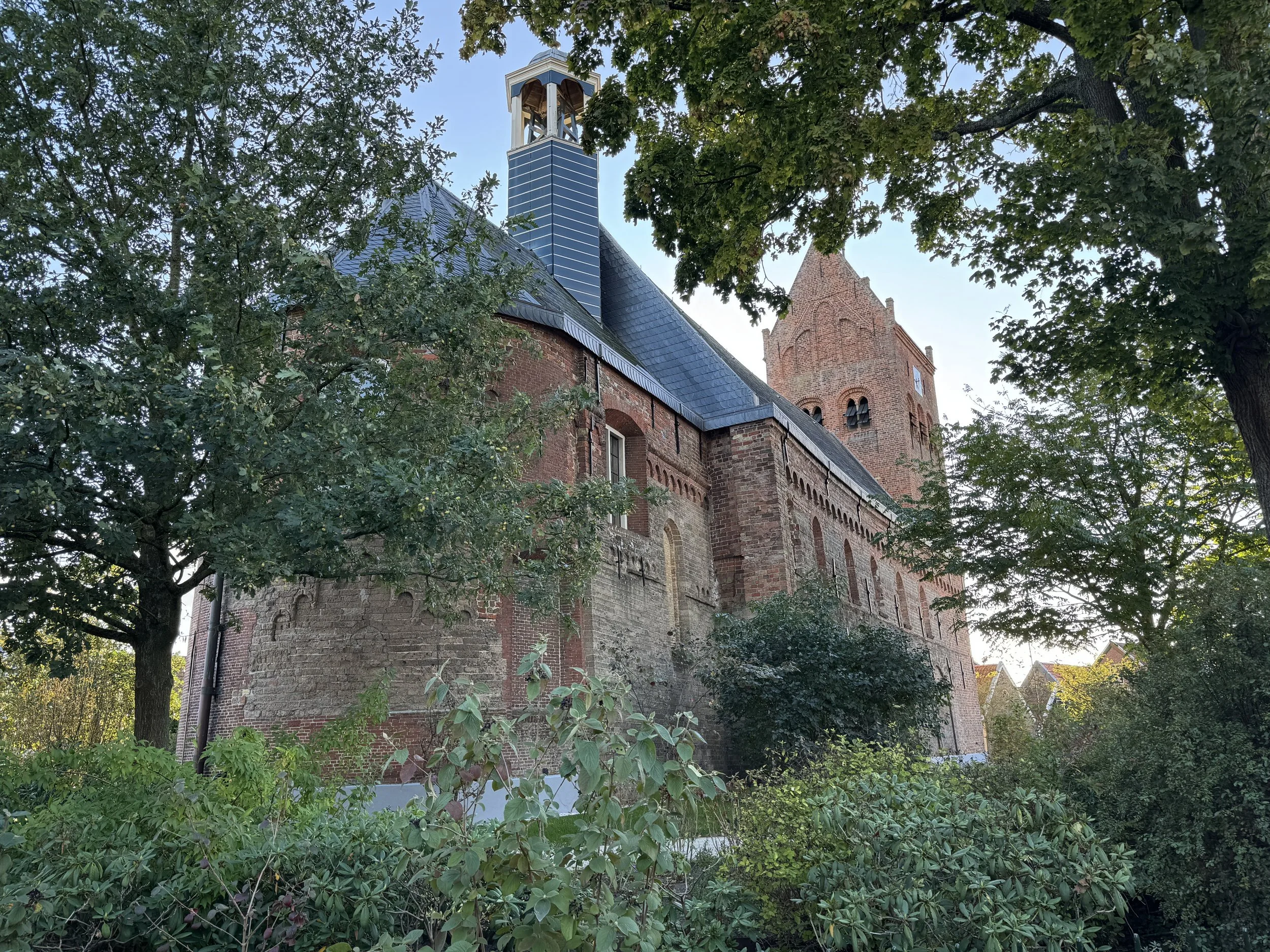
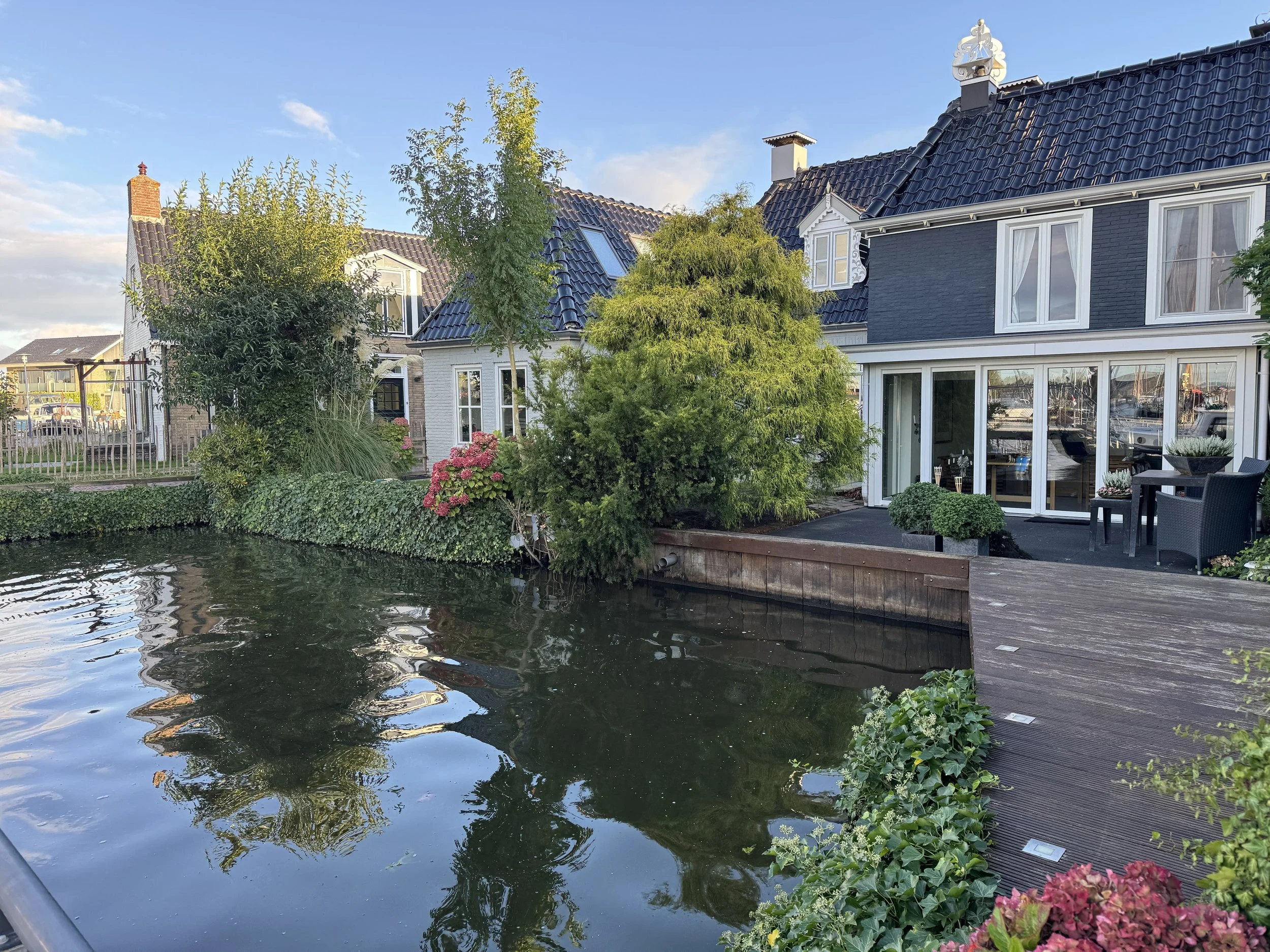
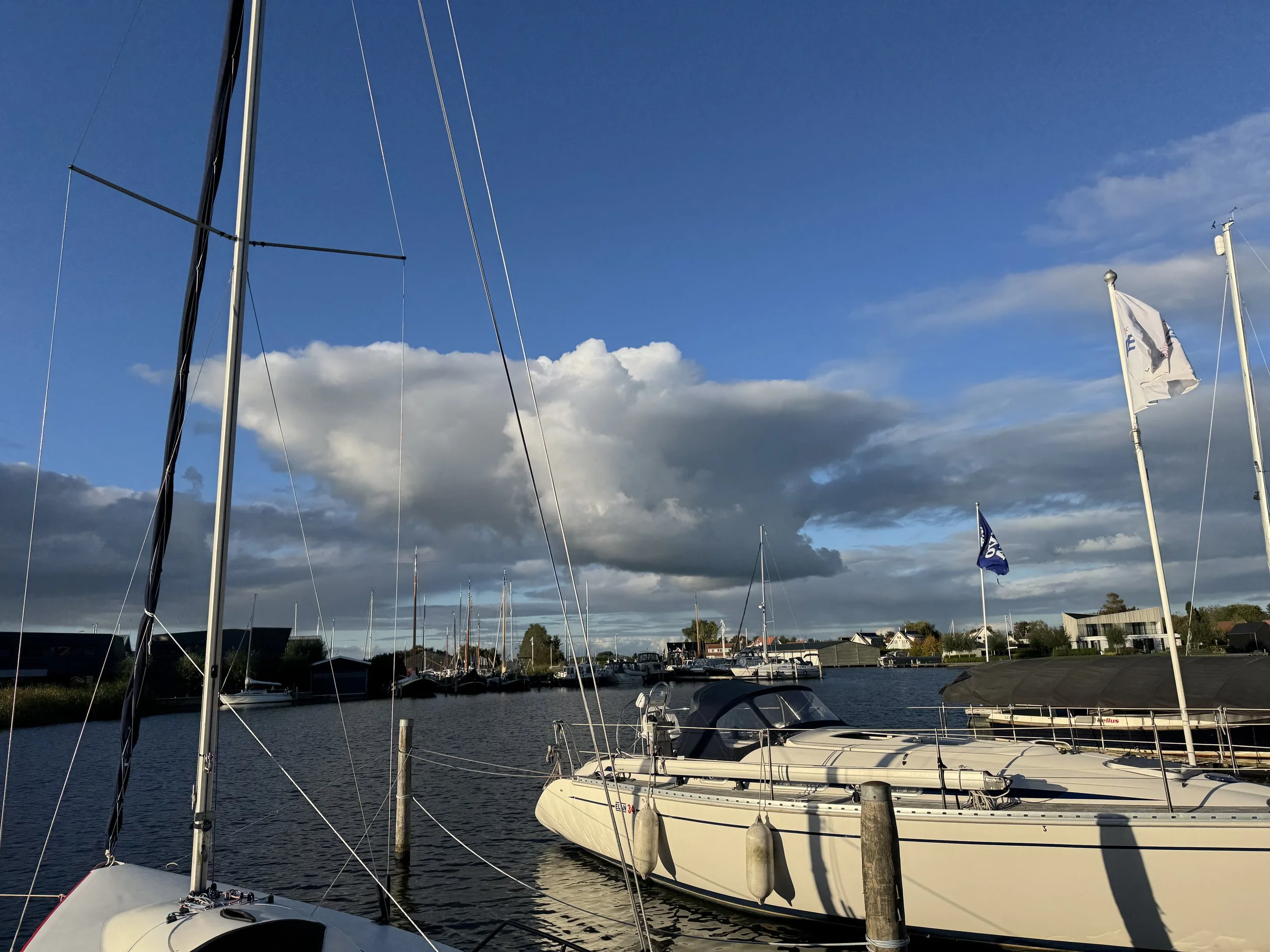
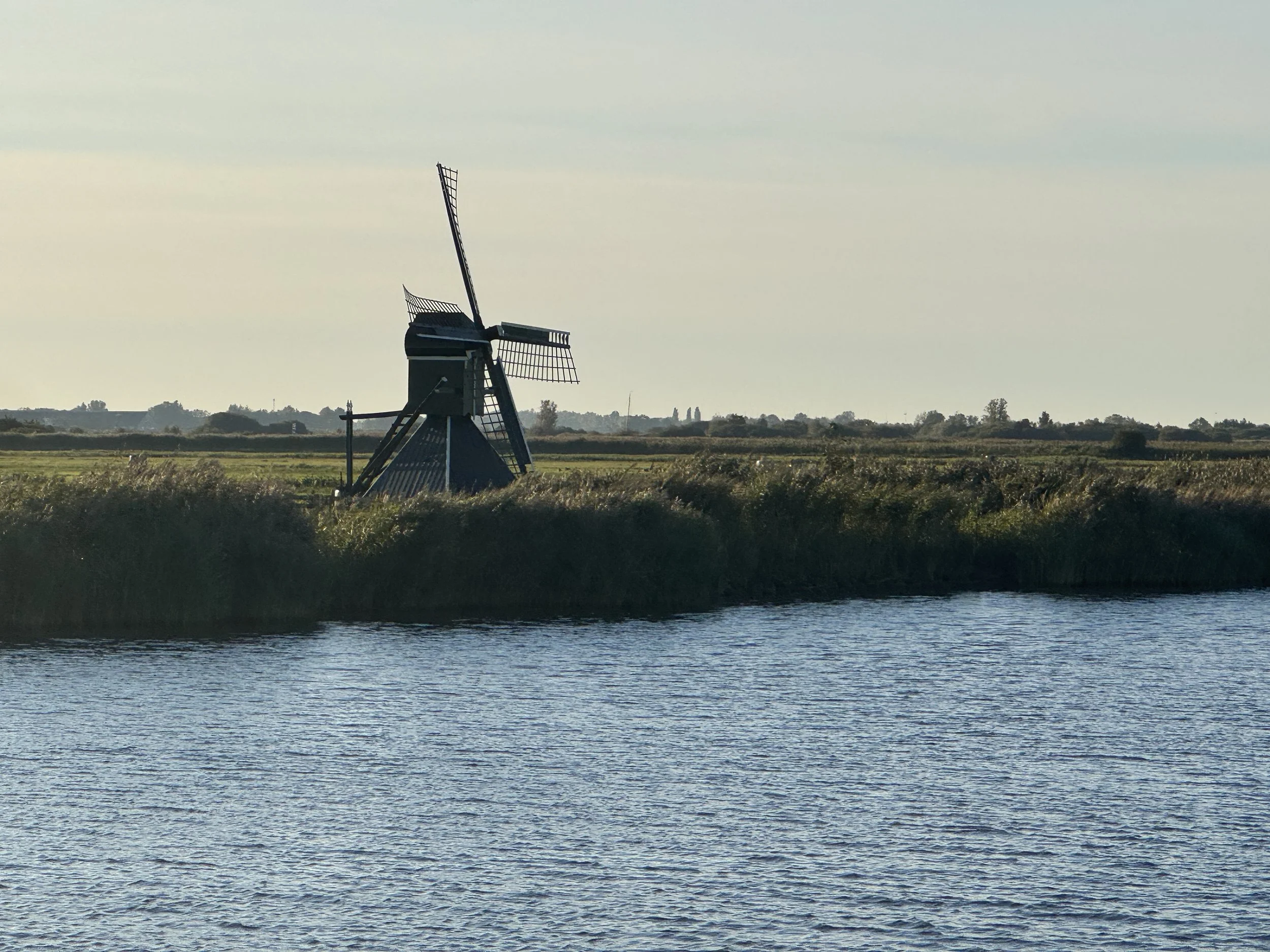

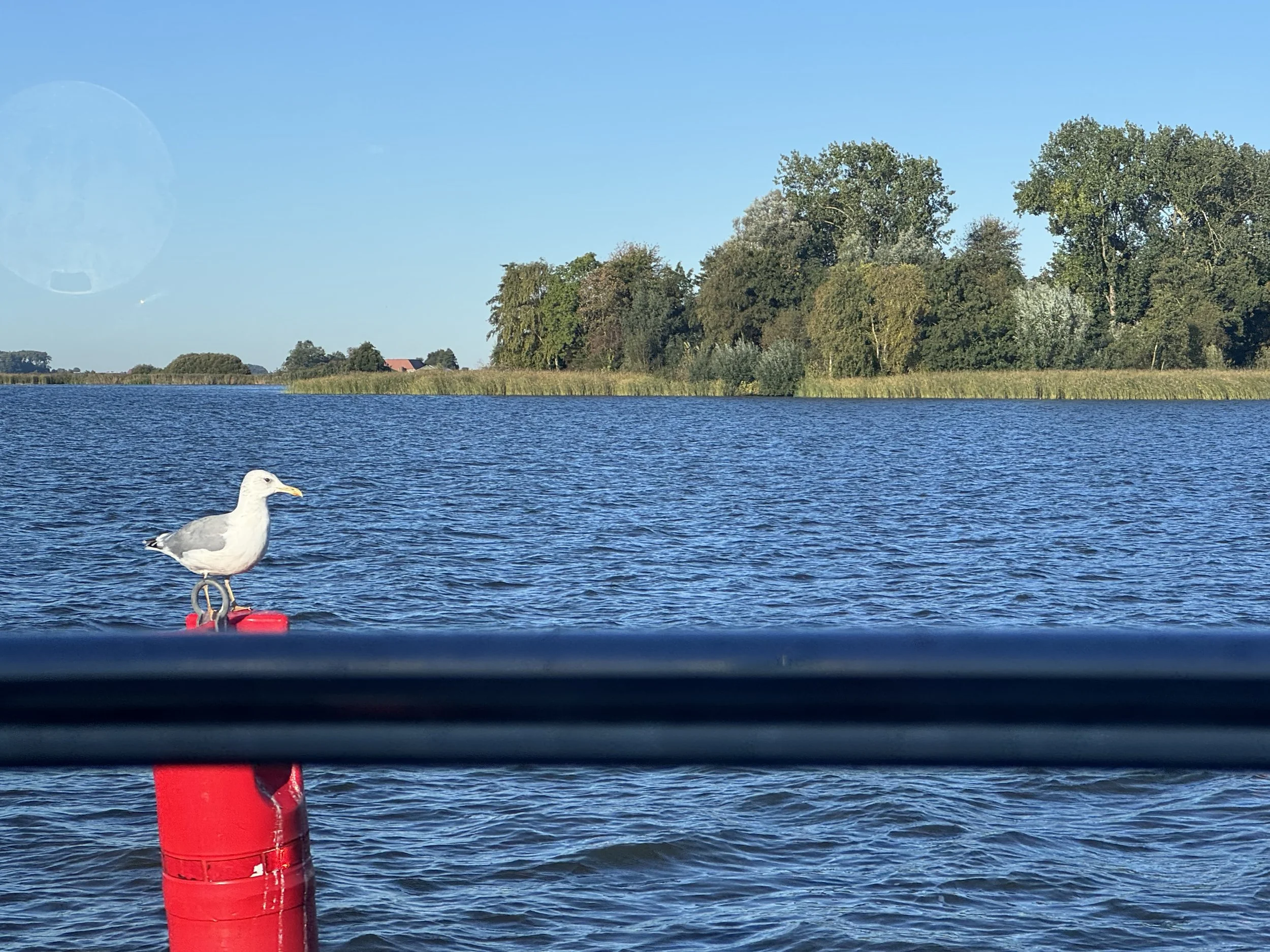

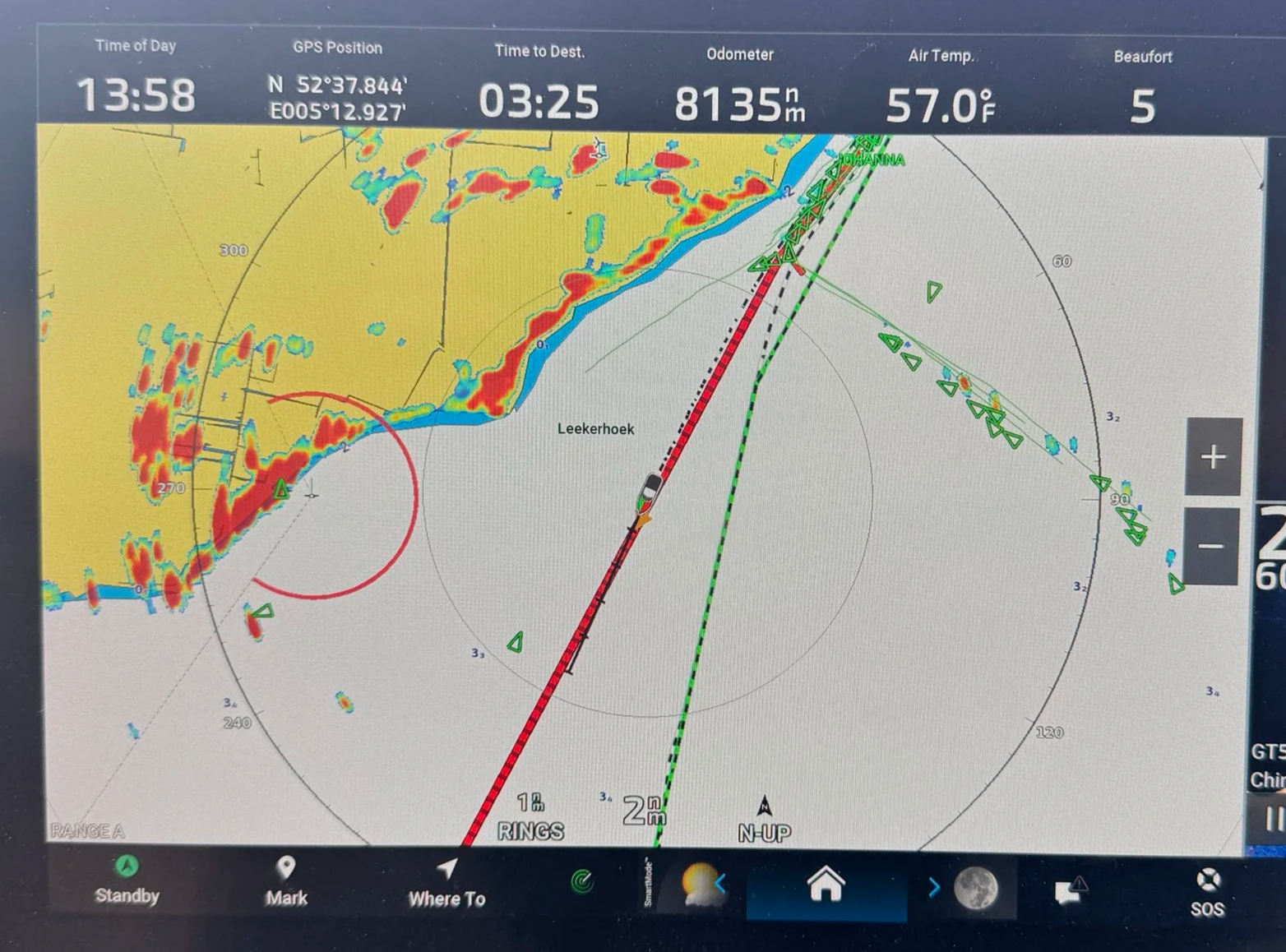

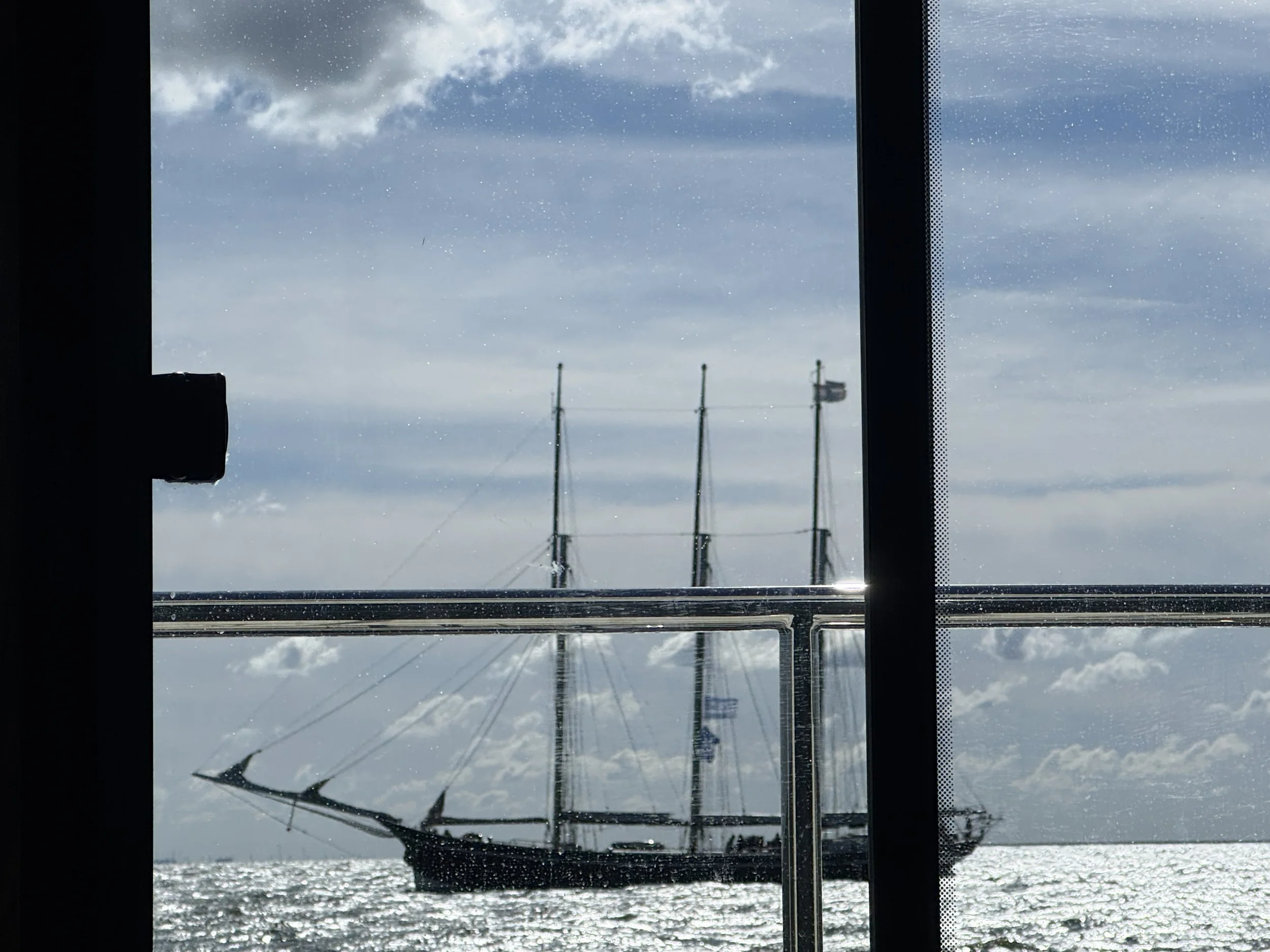


By midday we’d passed through the lock between the IJsselmeer and the Markermeer which felt familiar and refreshing. We were nearly to Amsterdam Marina where we stayed last June. Entering the IJ, Amsterdam’s waterfront, we passed through our 200th lock. We found our slip in the marina around 5:30pm, in time for a stunning sunset. We would linger a few days, sleuth out the engine issues and catch up on long overdue chores. There is gladness and satisfaction from accomplishing the mundane.
The return to a familiar spot triggers a slowing down, deeper breathing and reflection. The specific place or surroundings don’t really matter it’s the quiet safety of recognition, it’s the softening I notice in my body, it’s an inner sense of being home.


